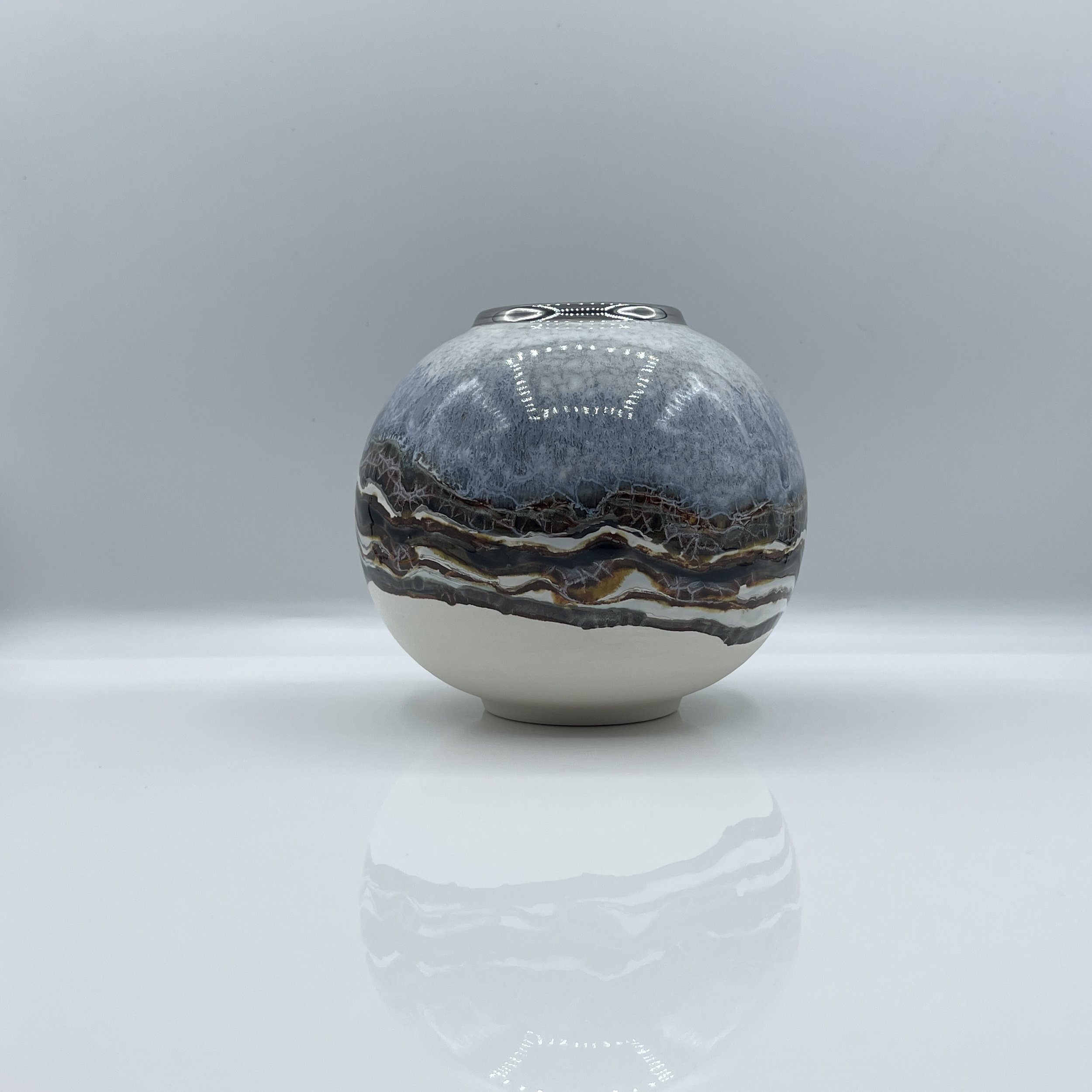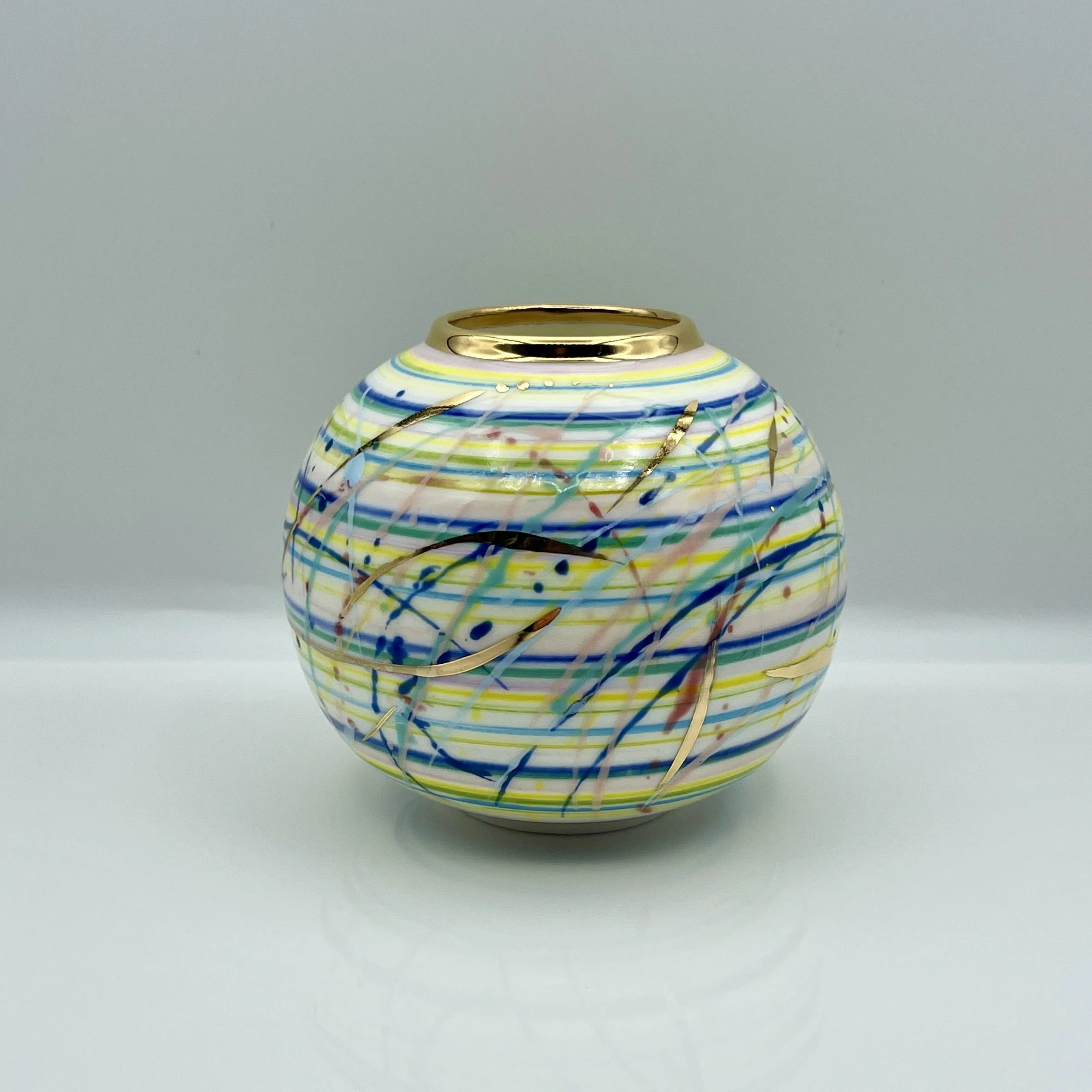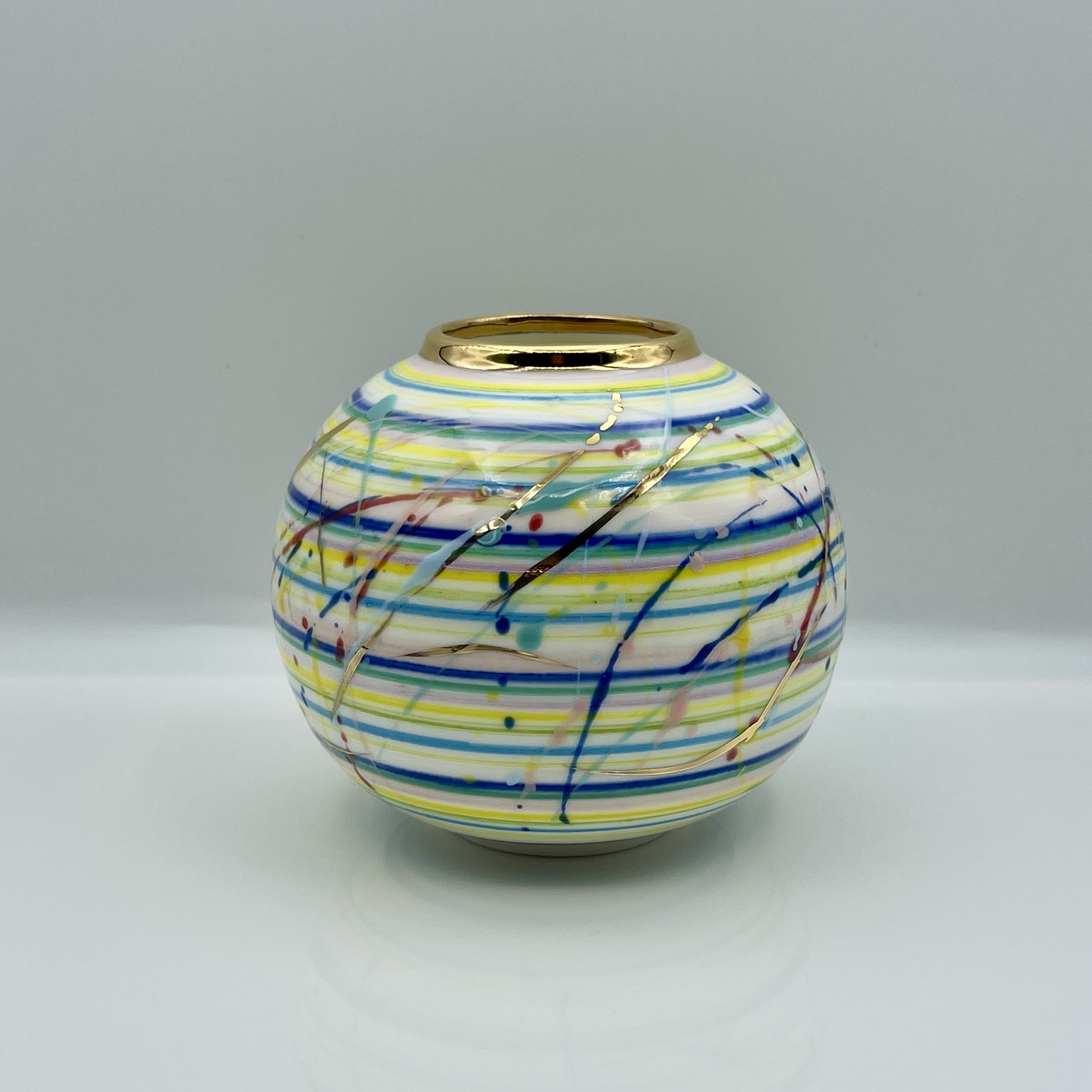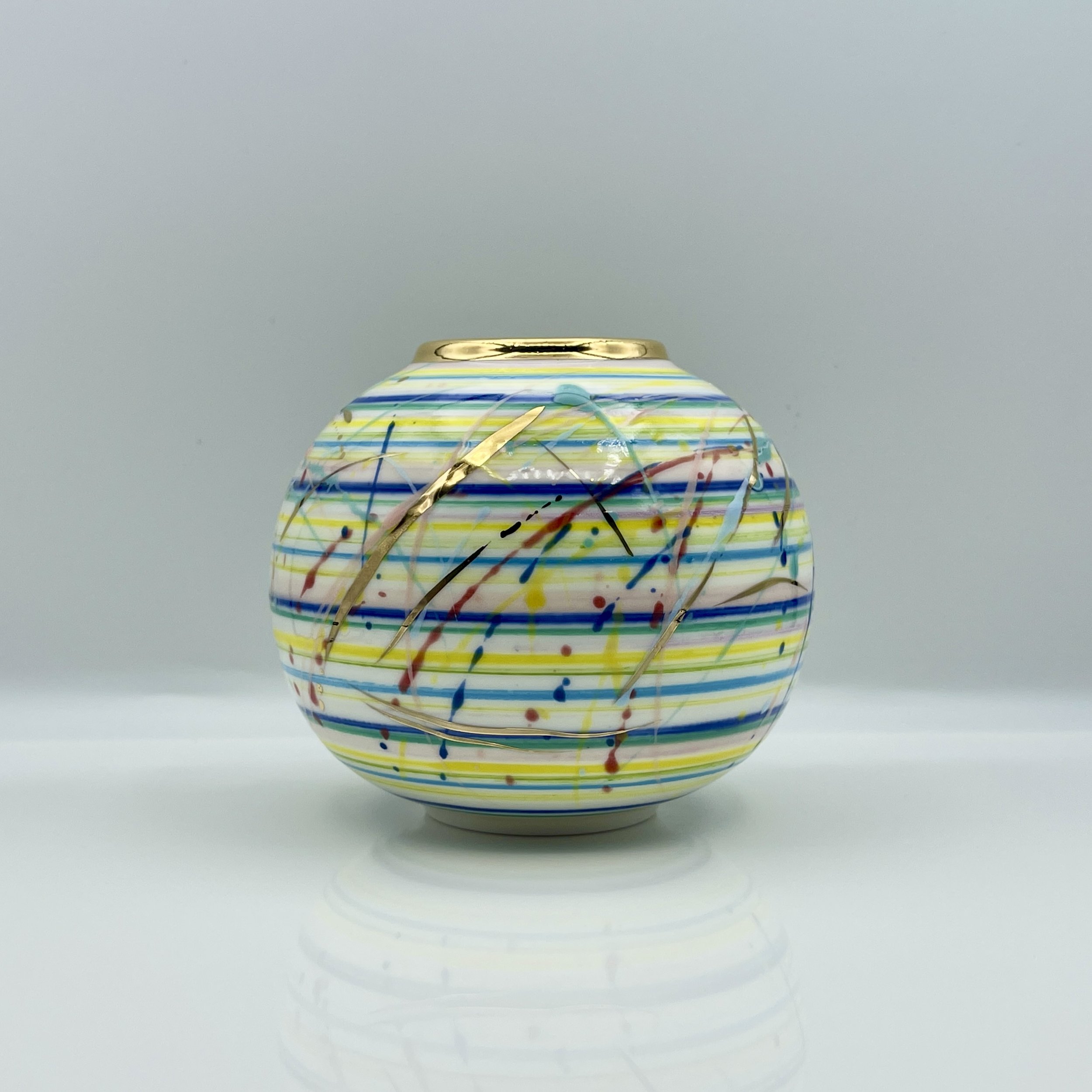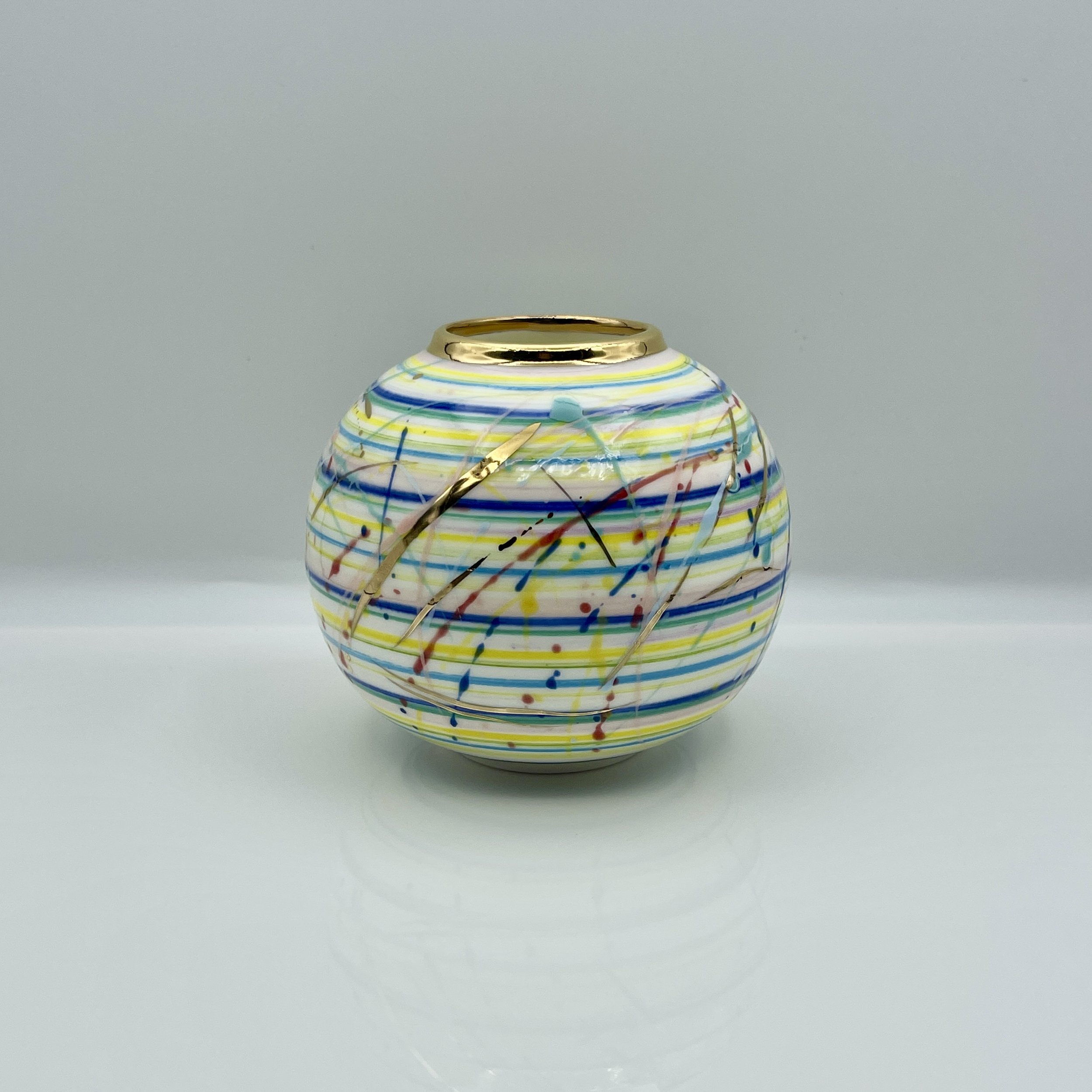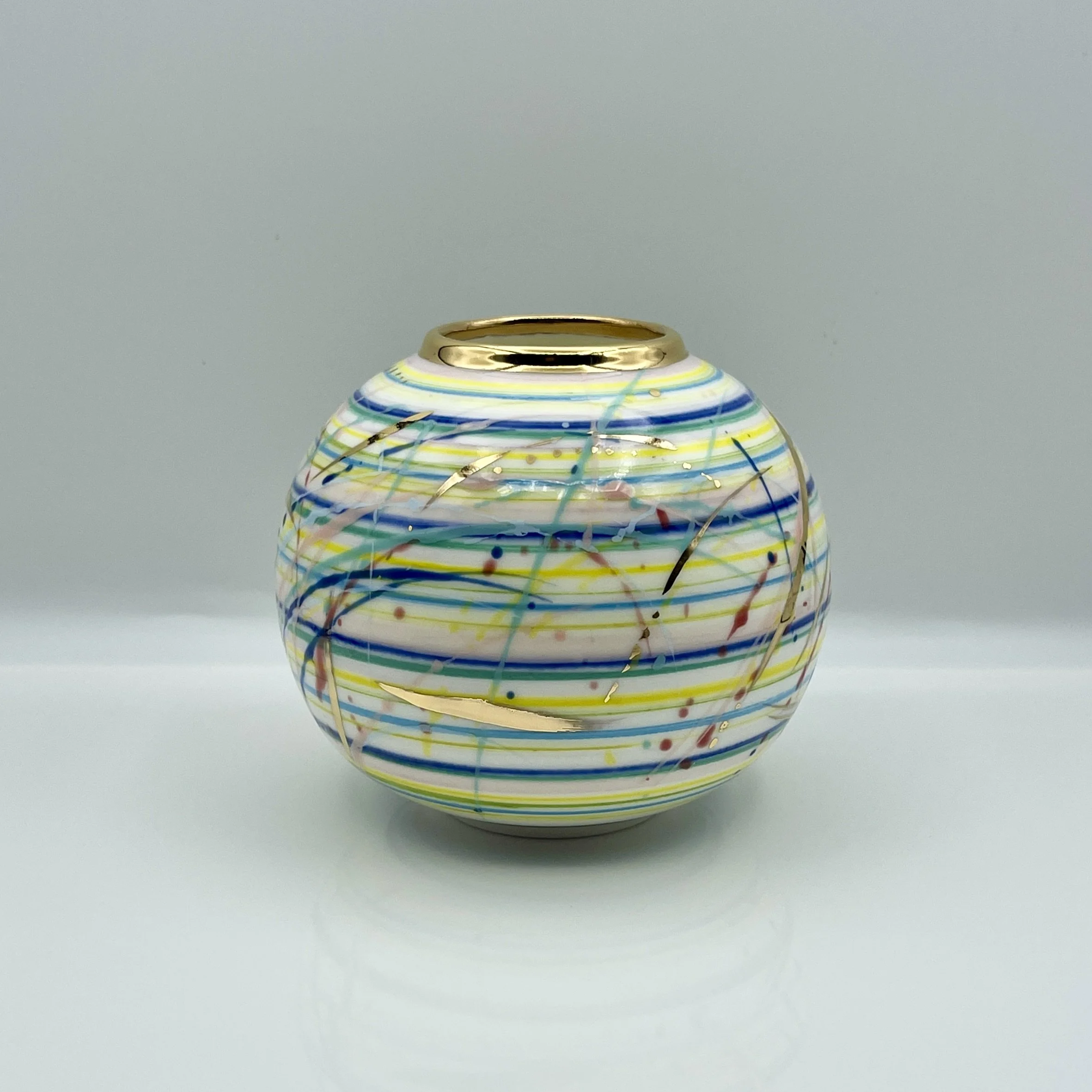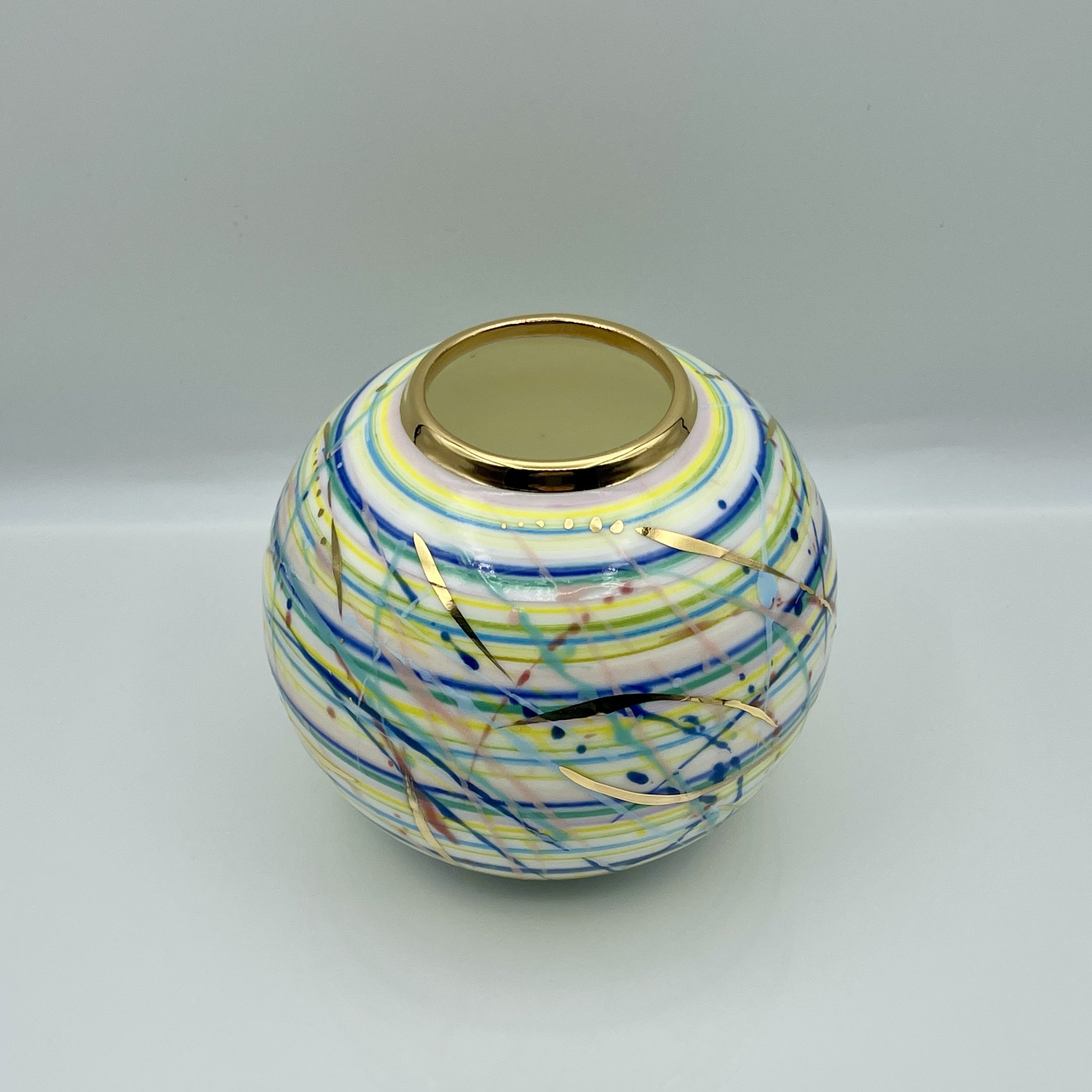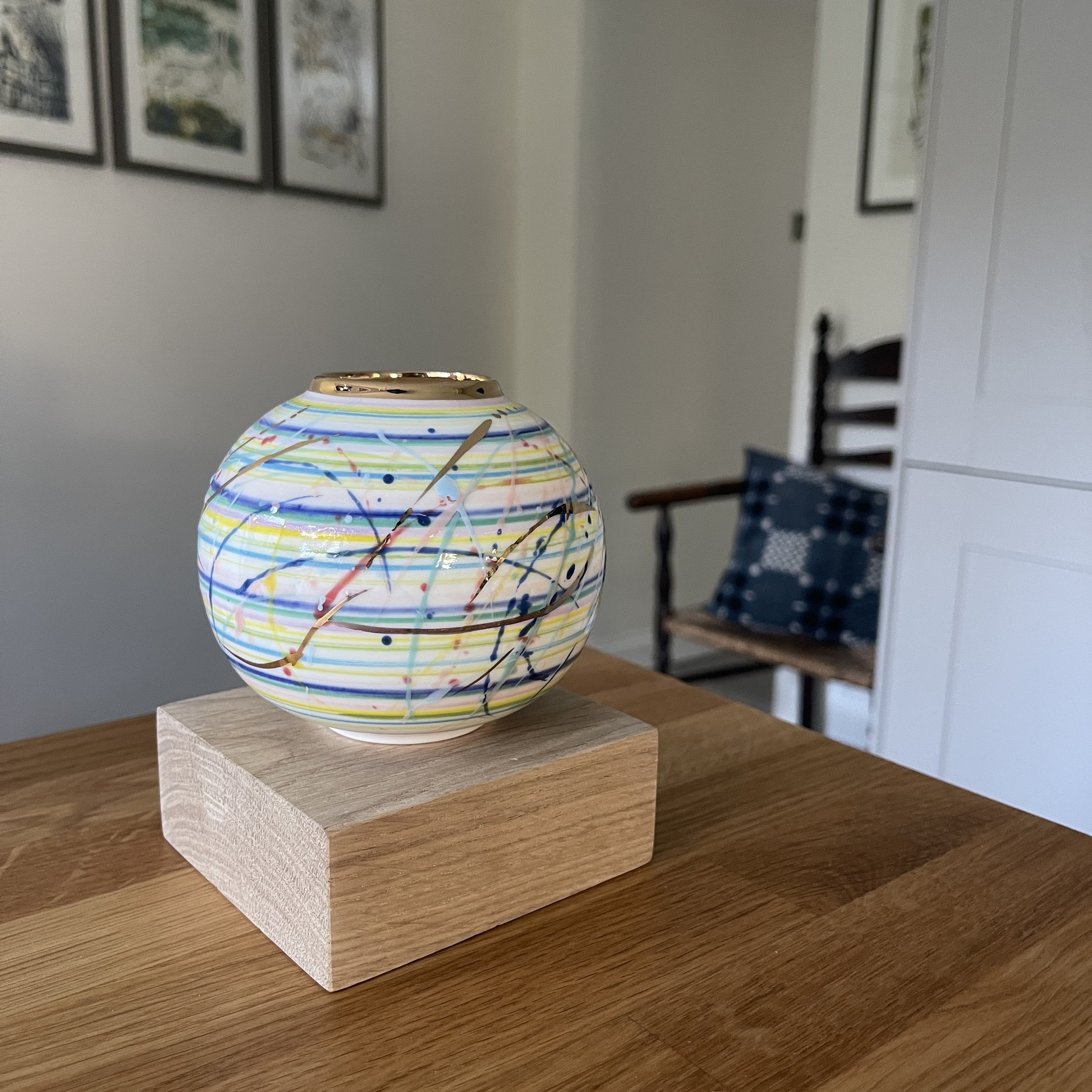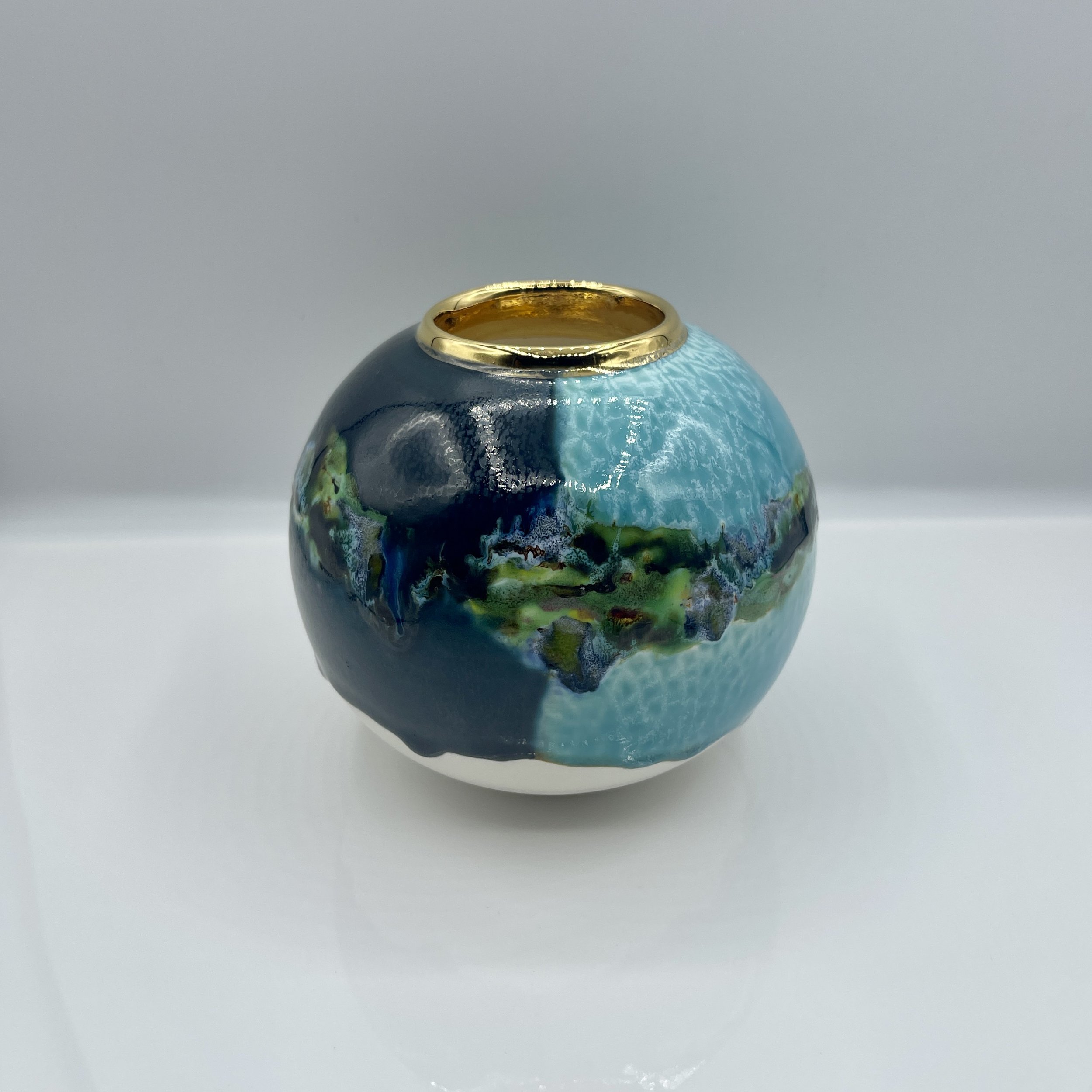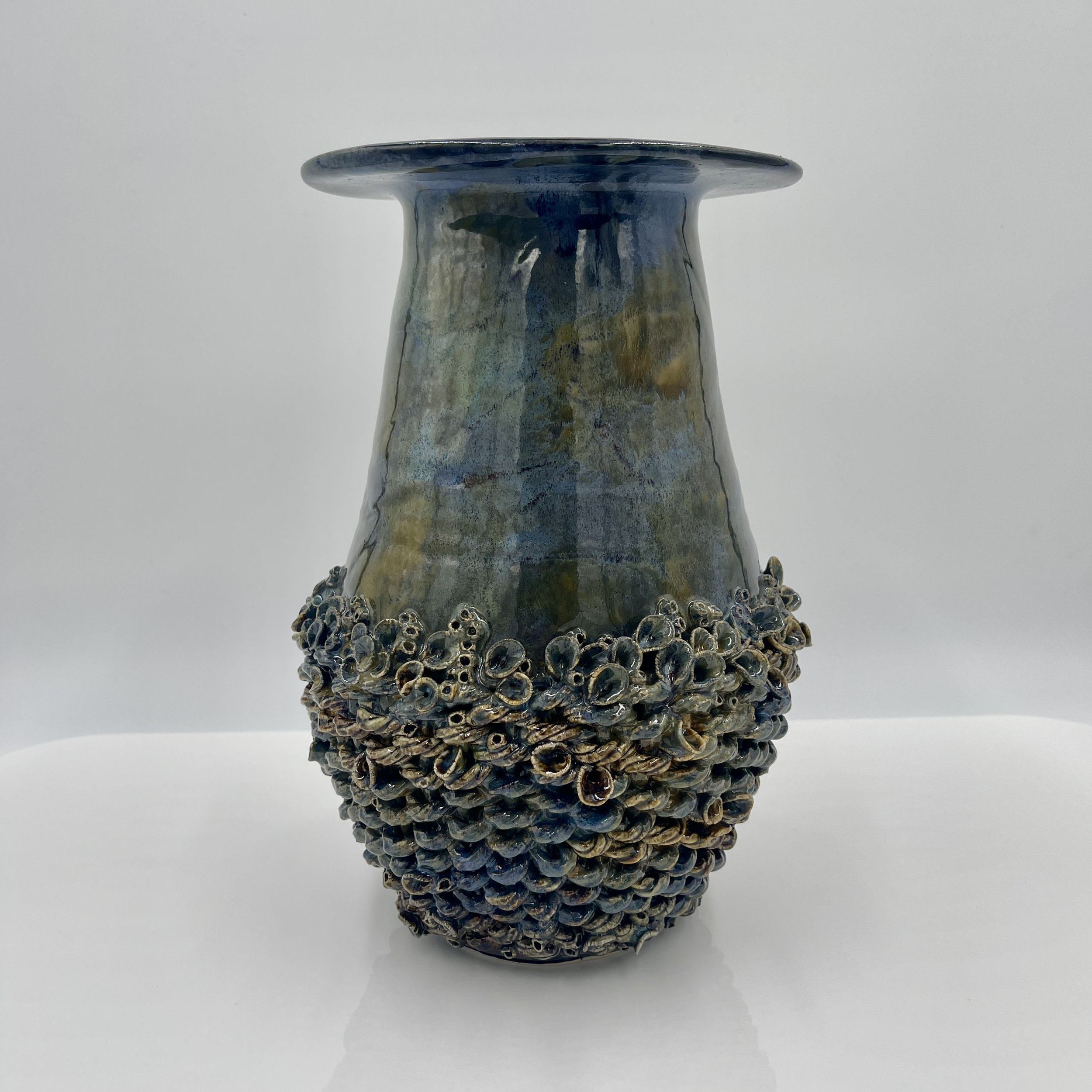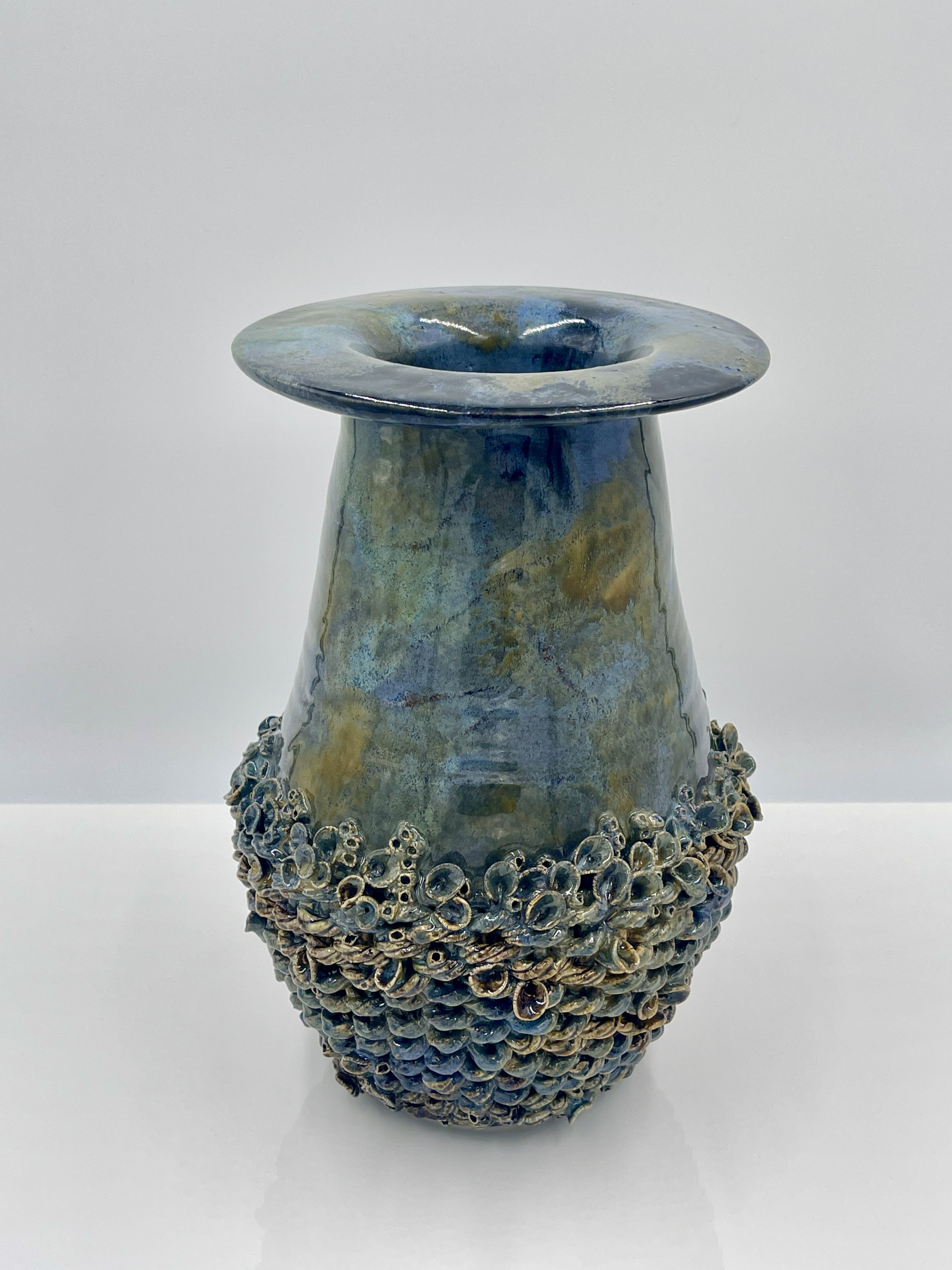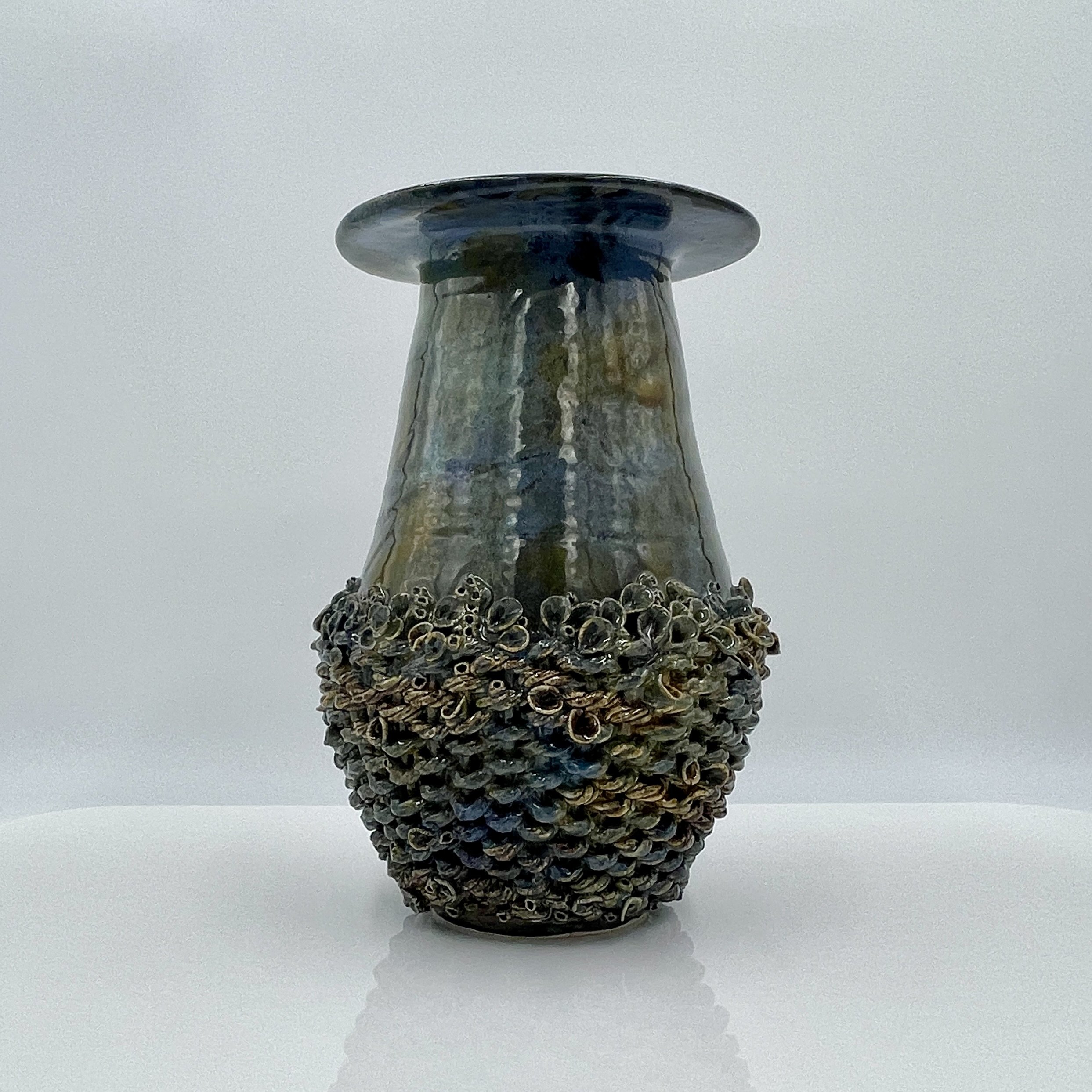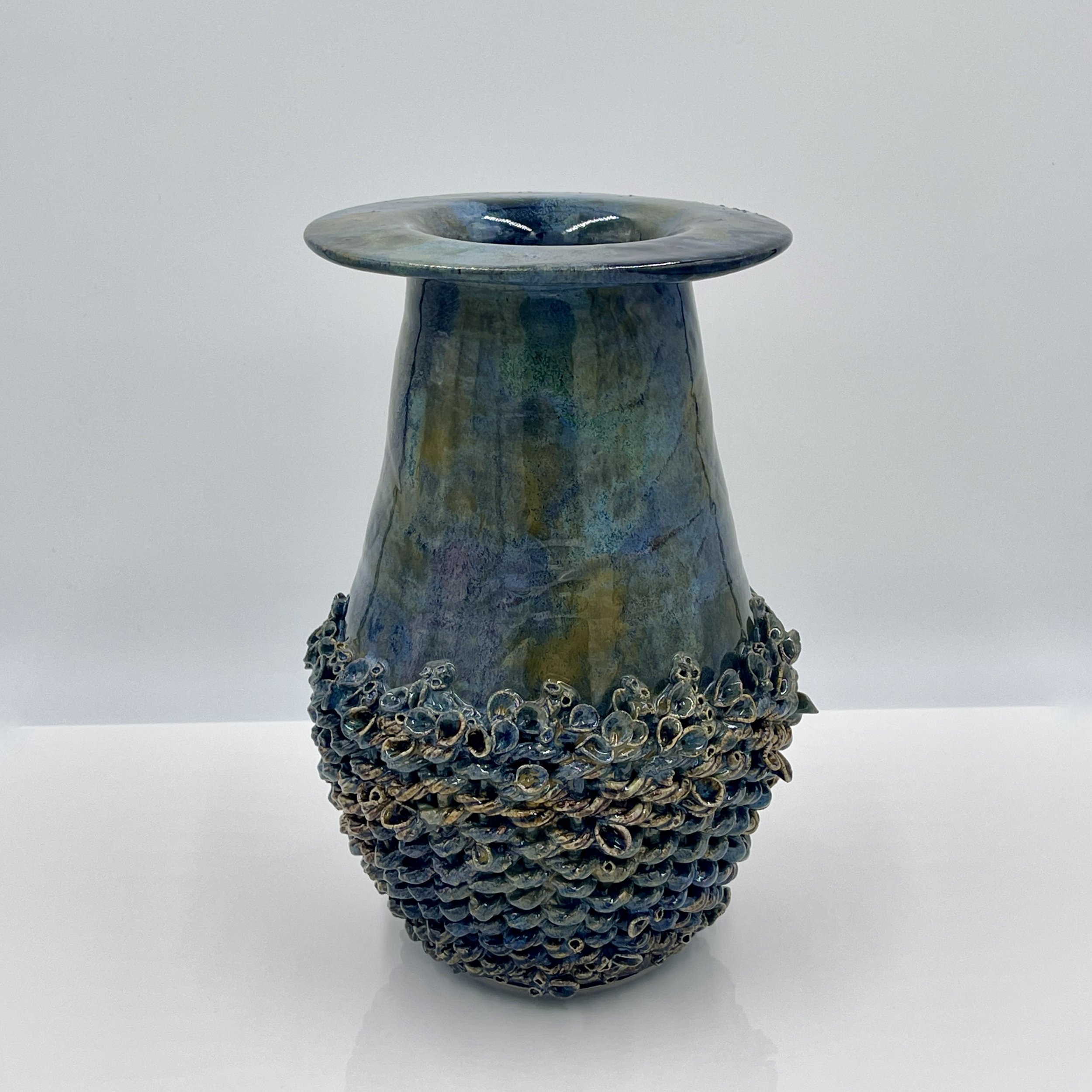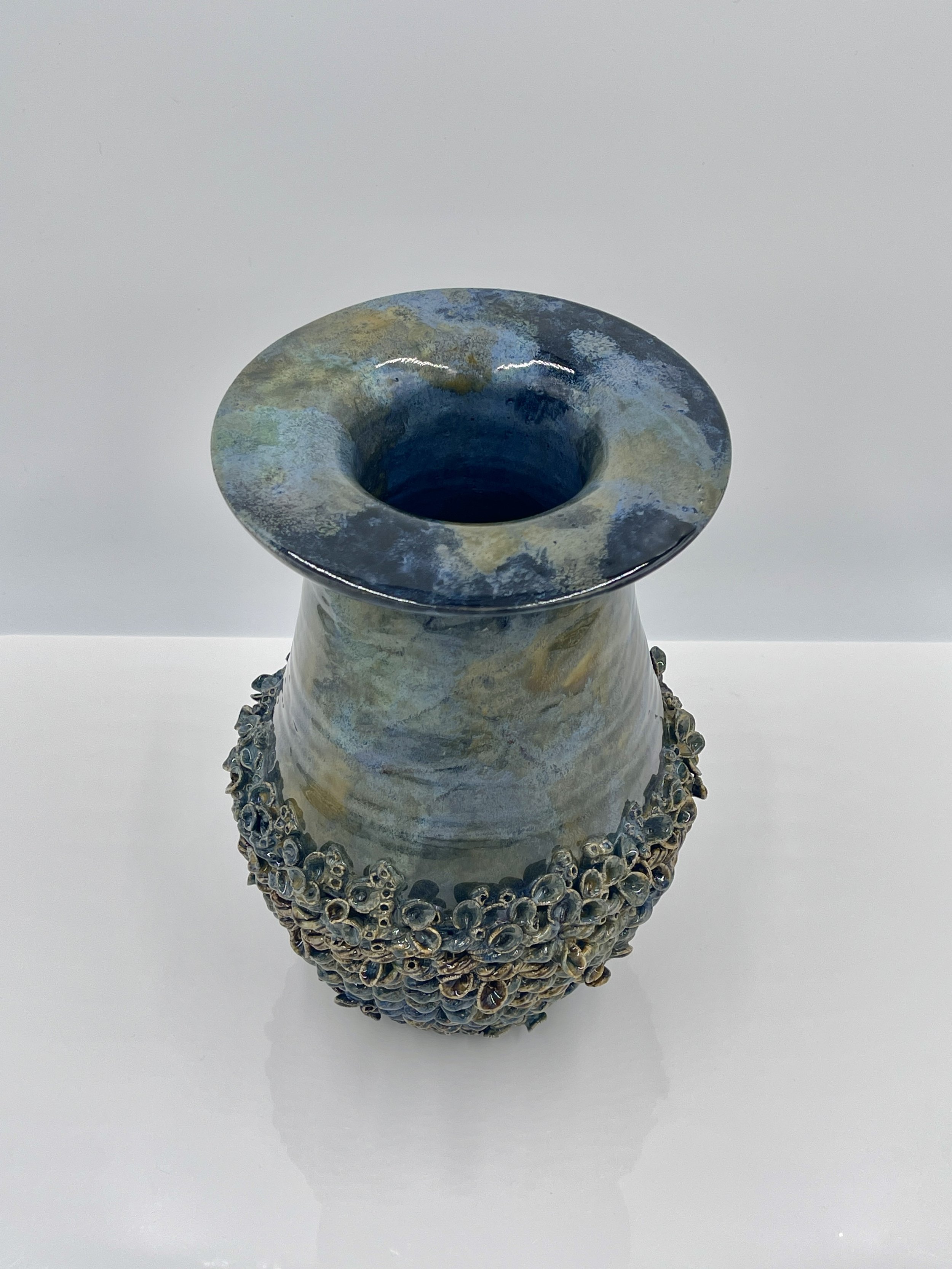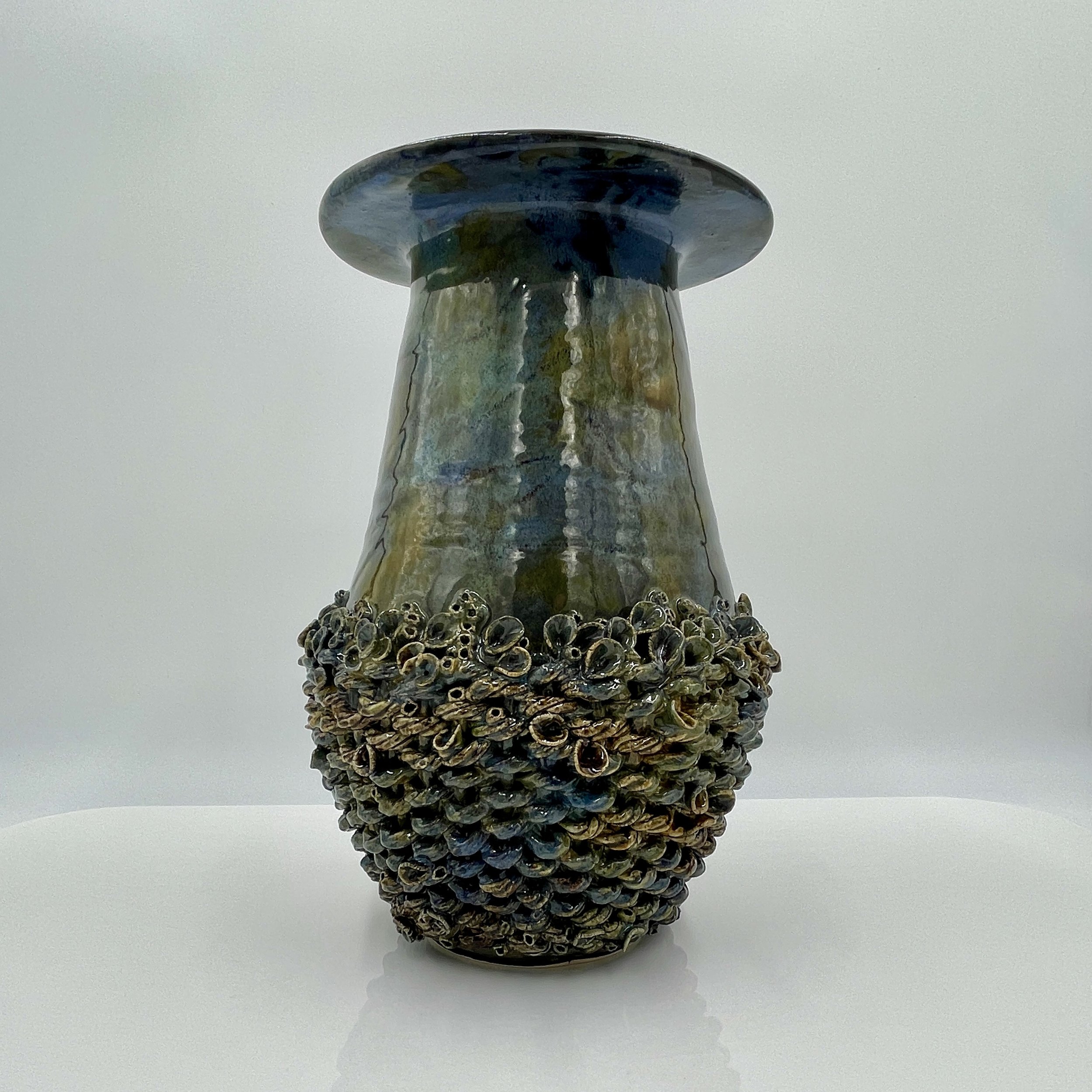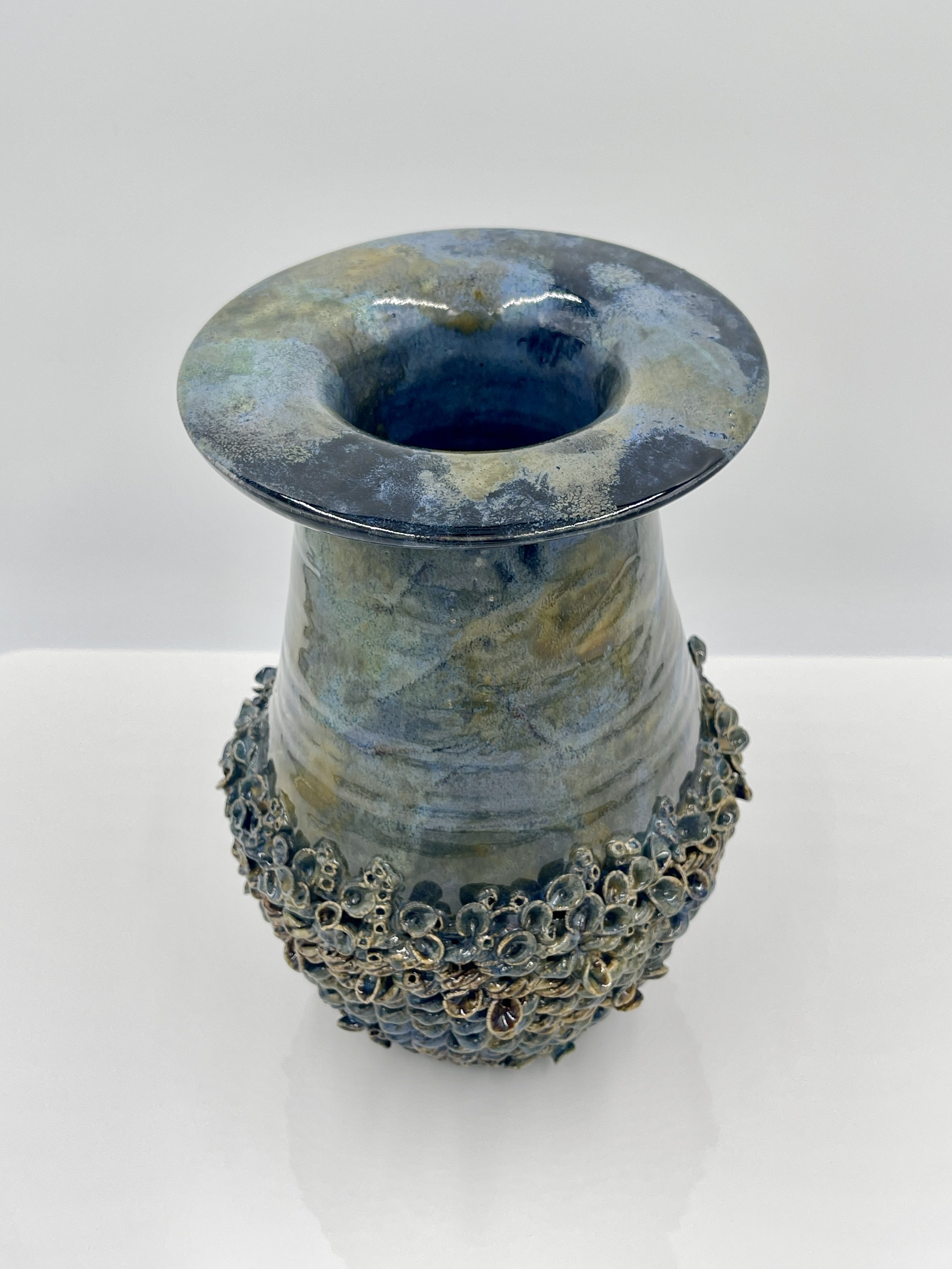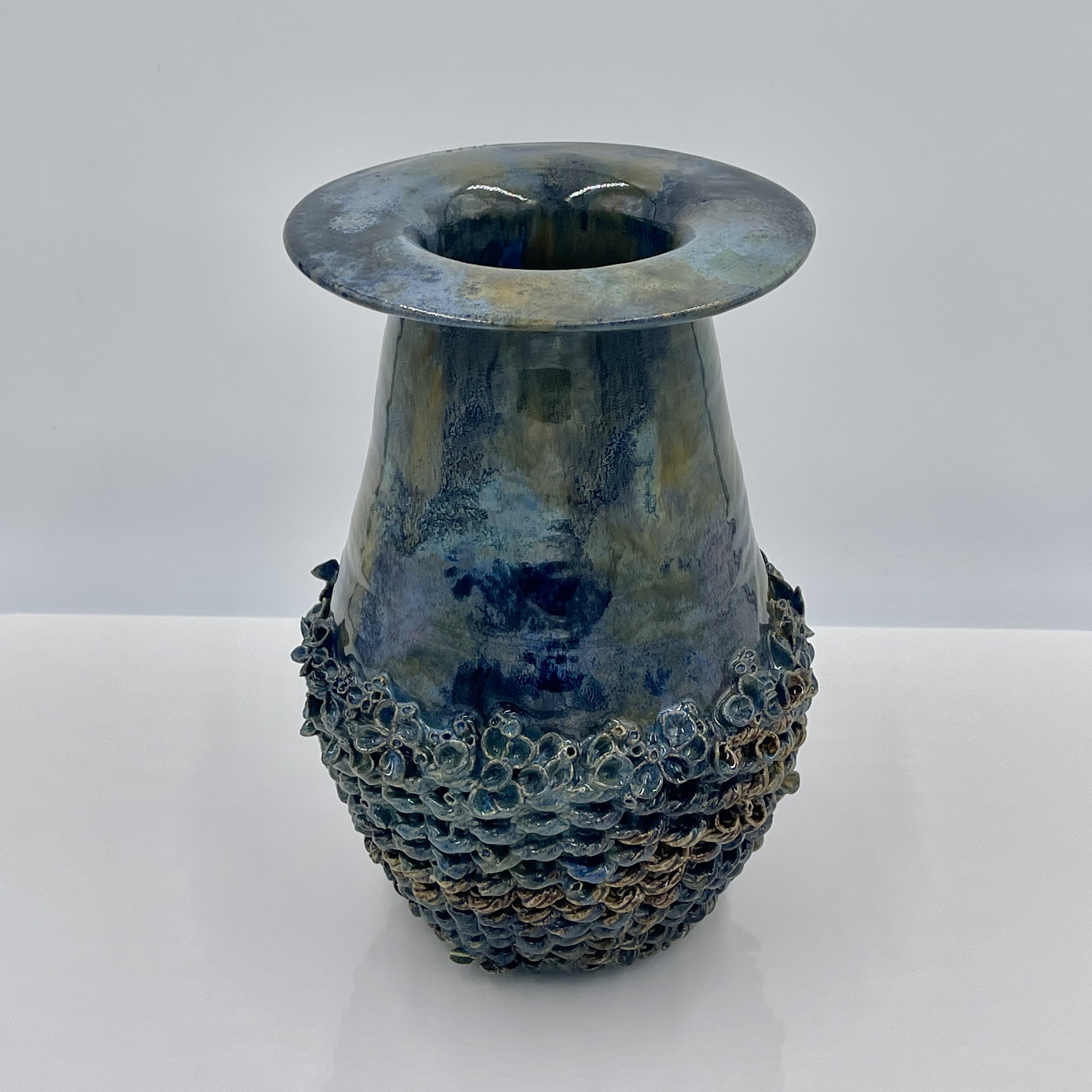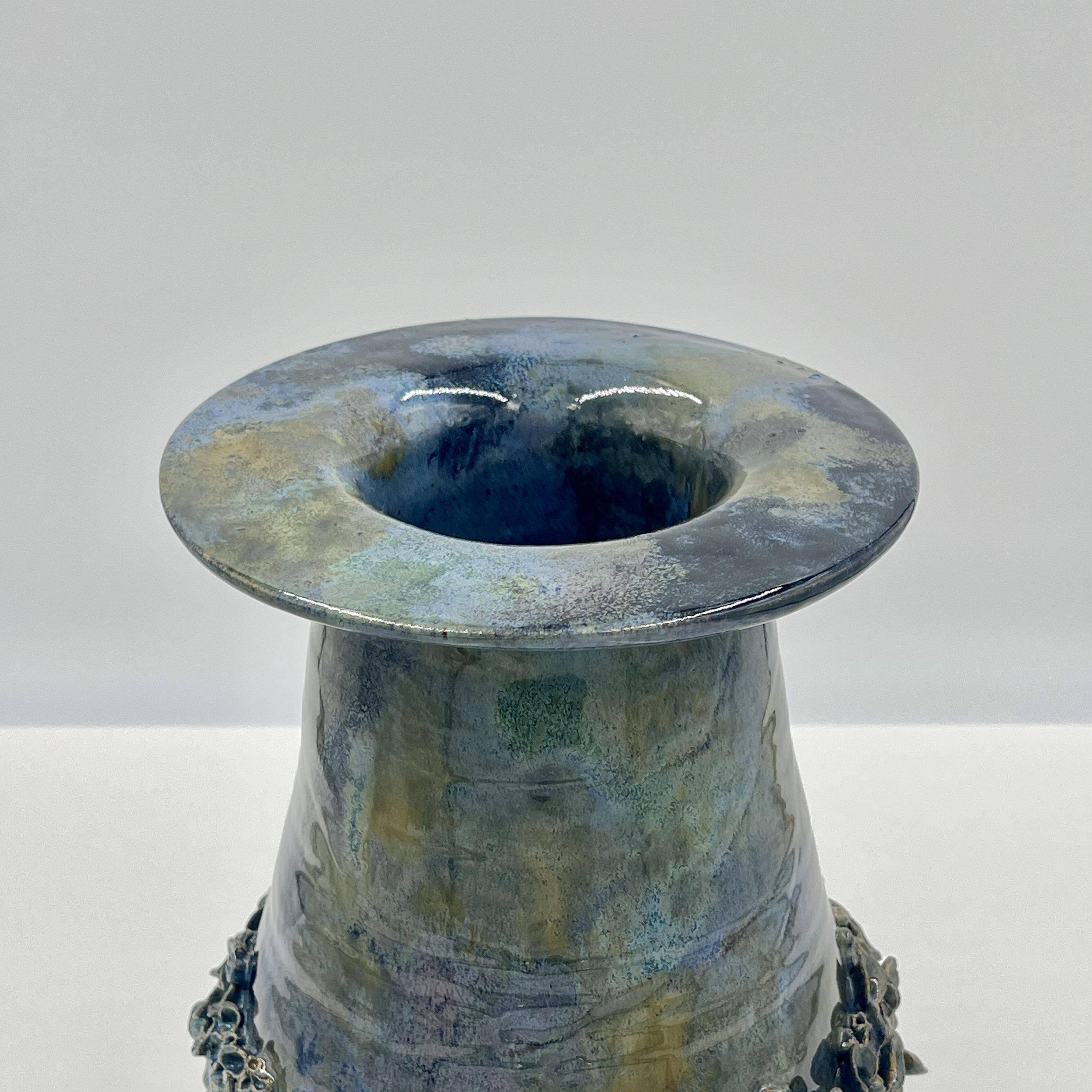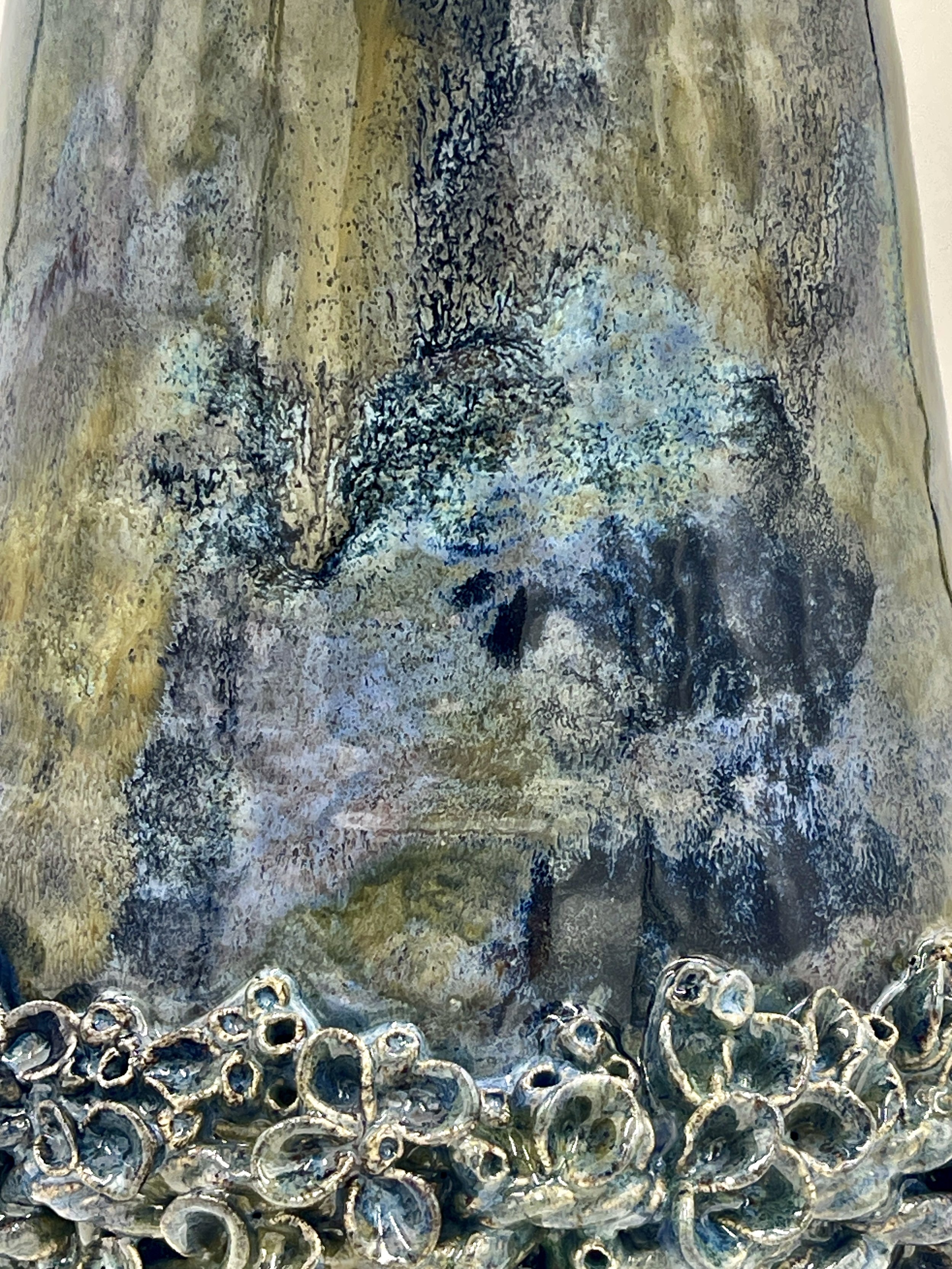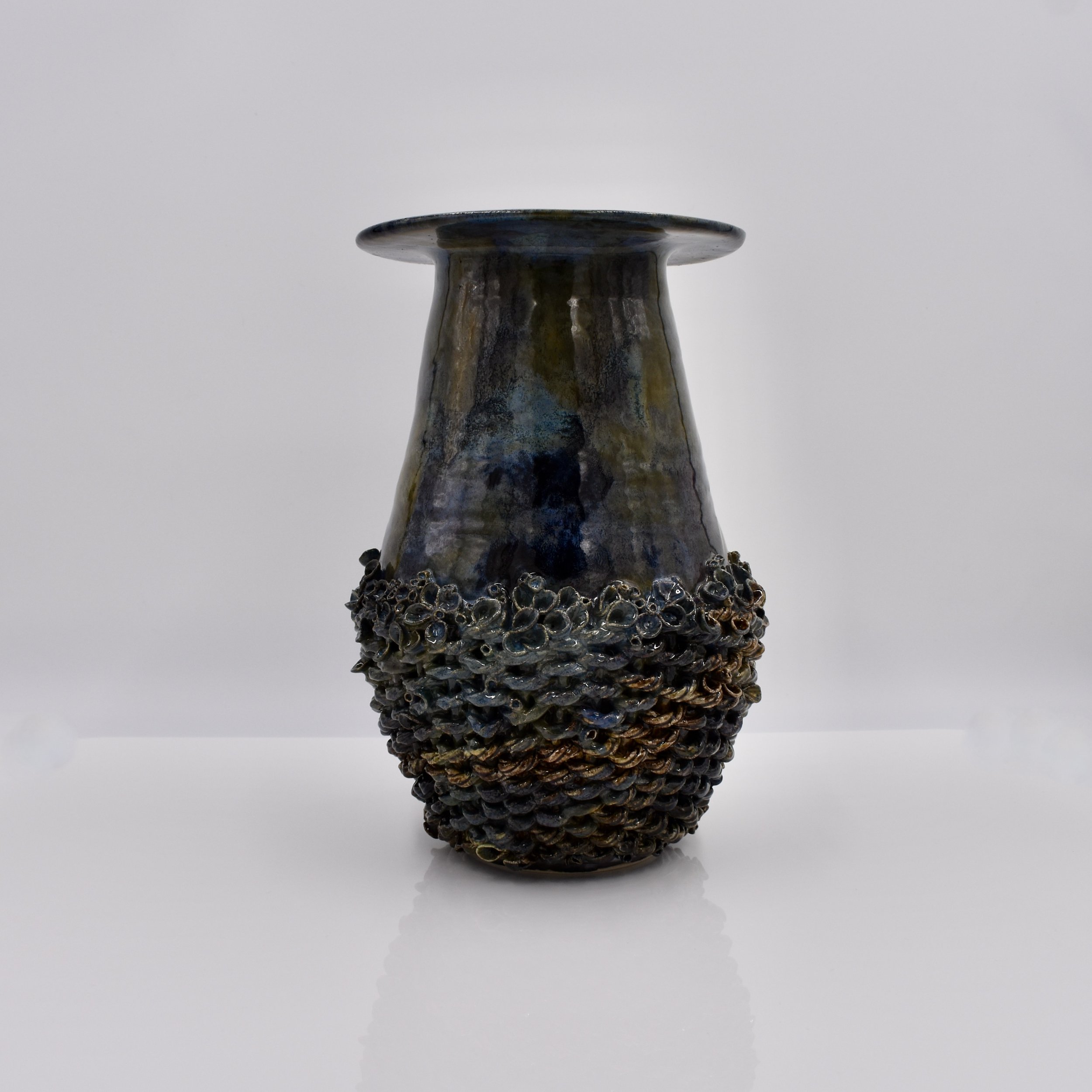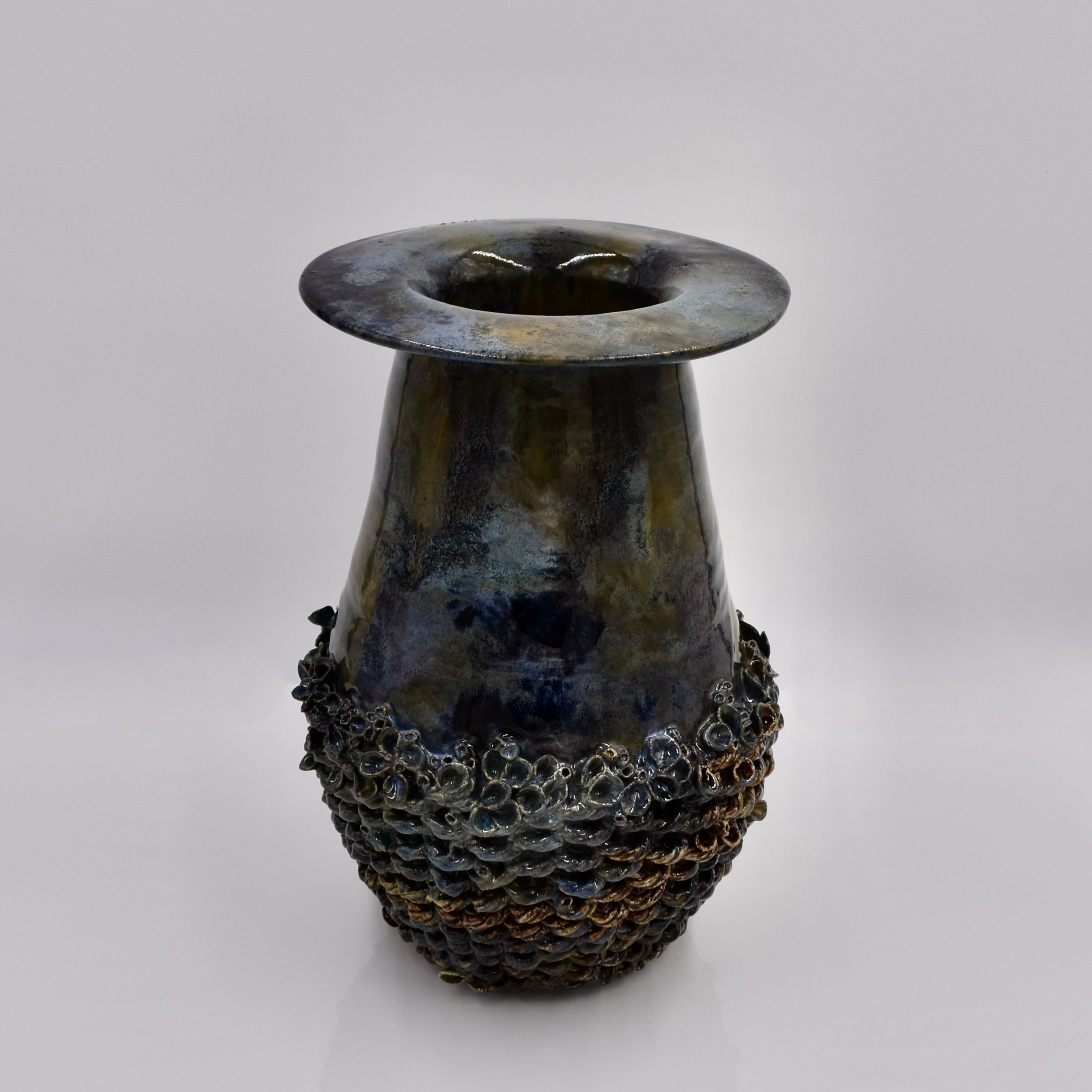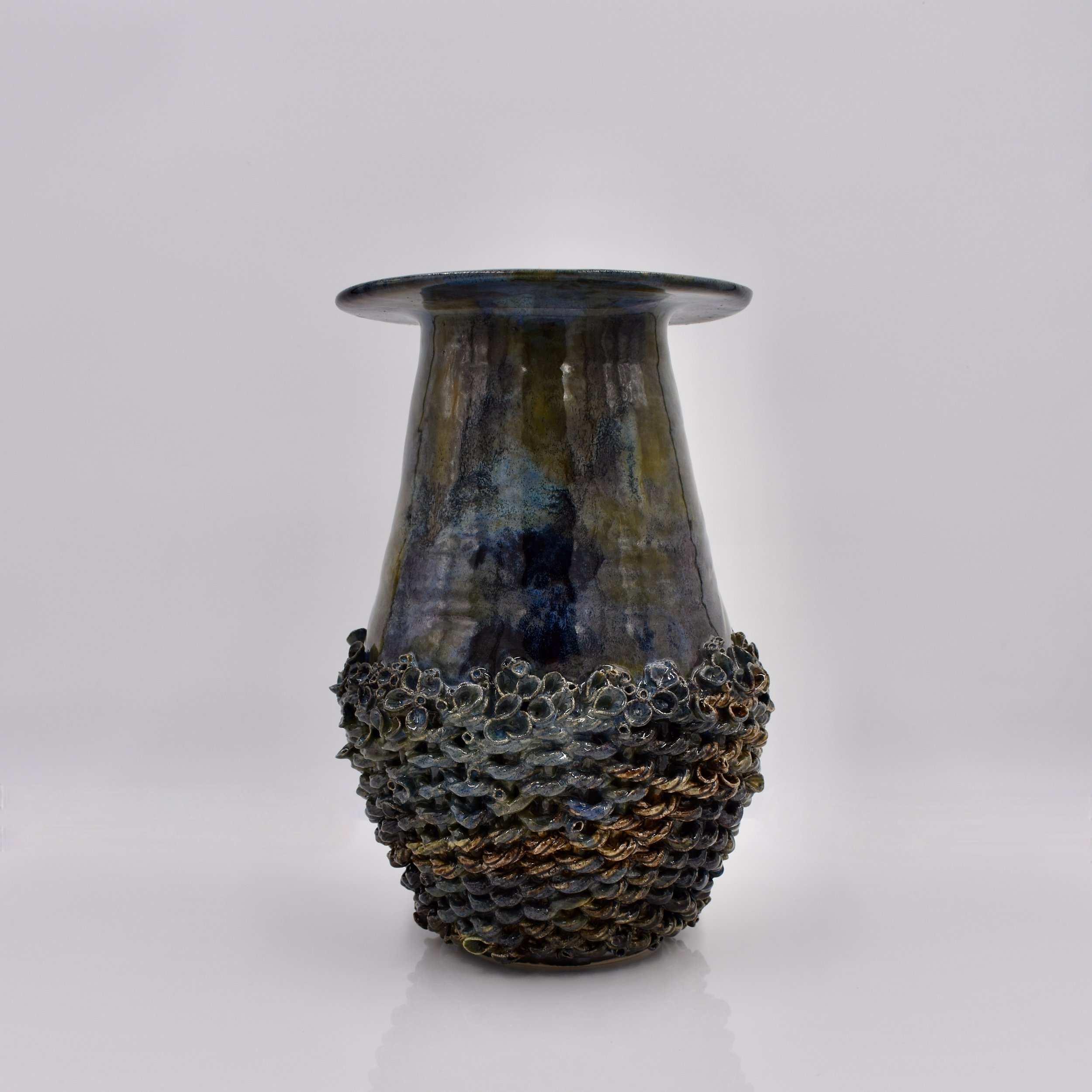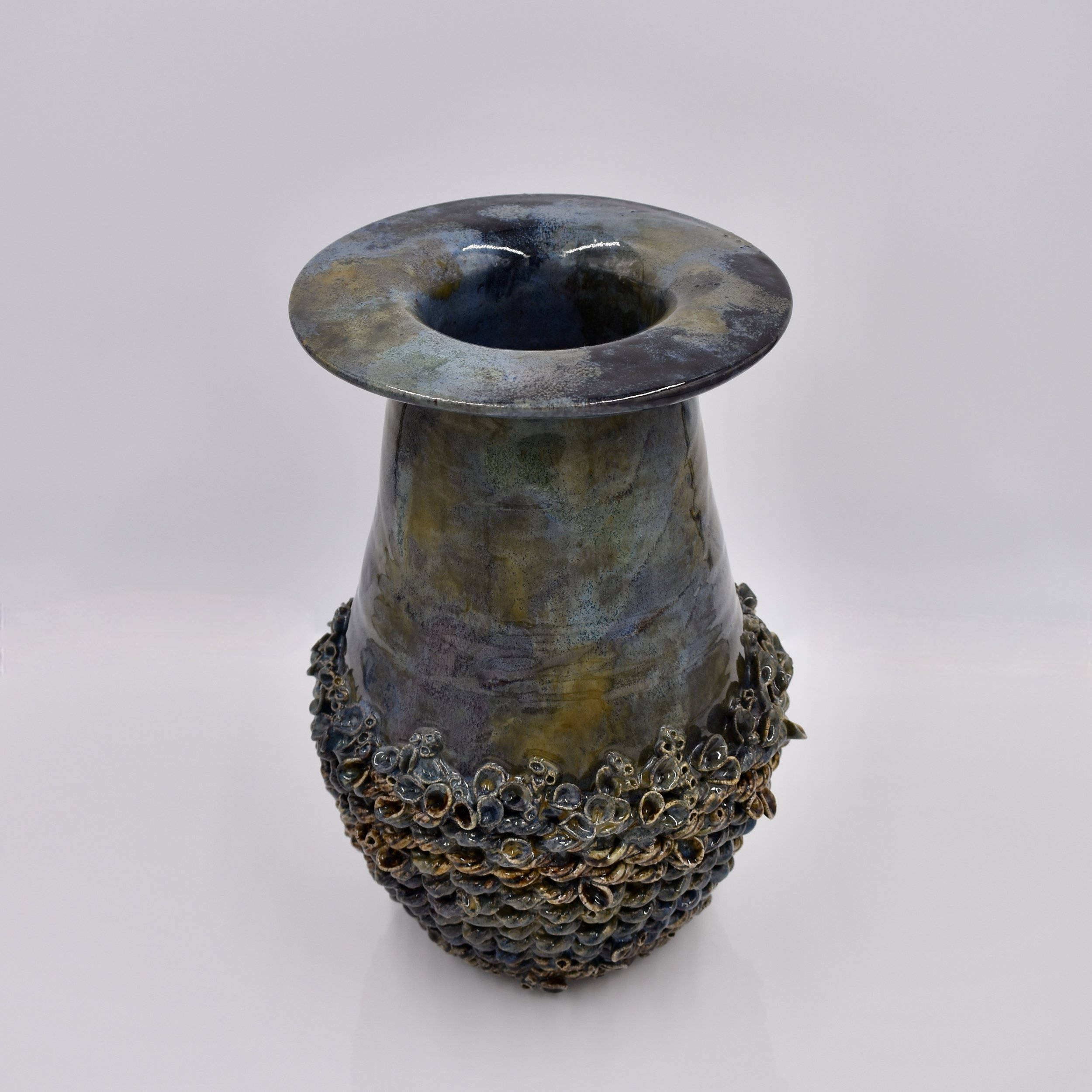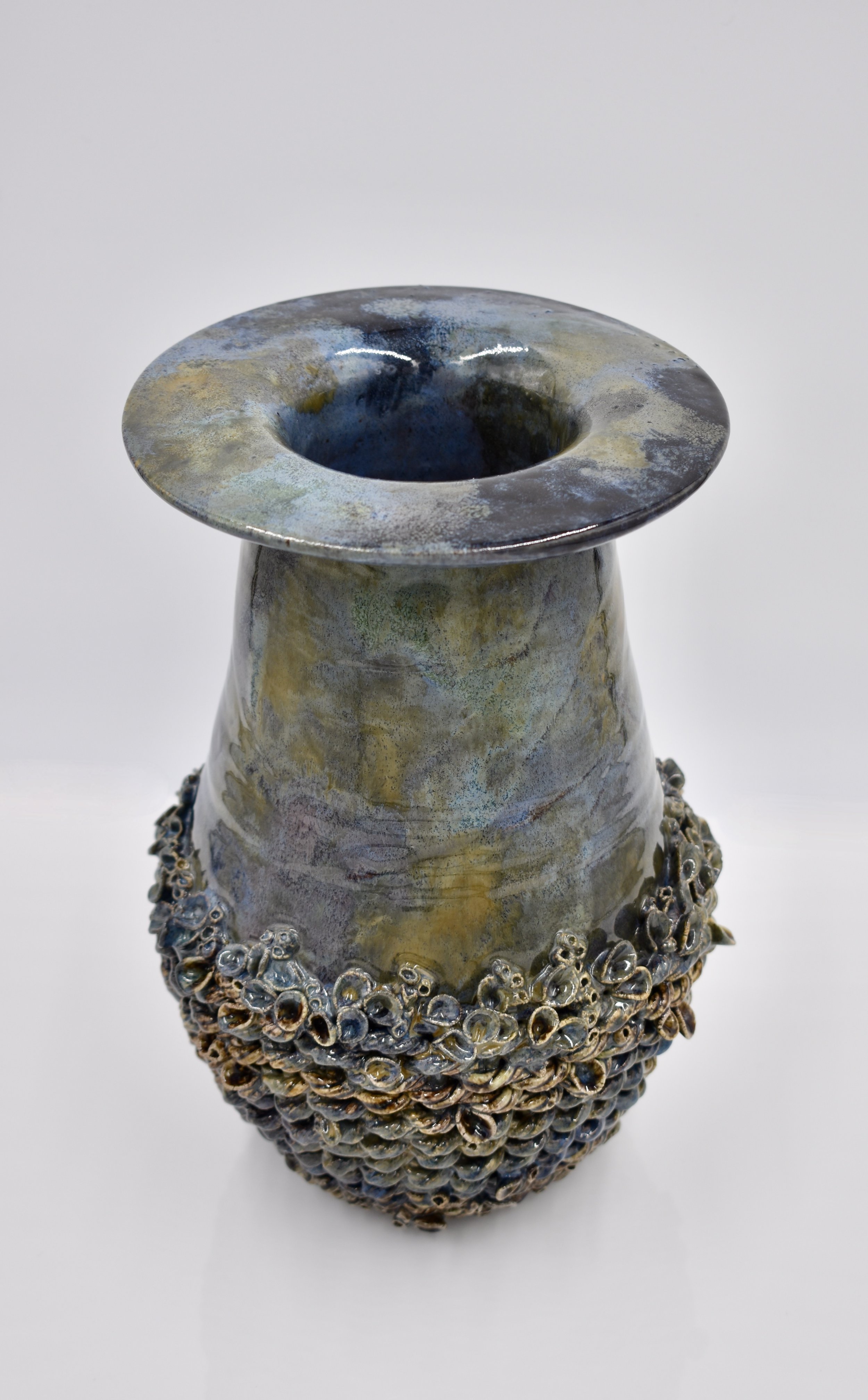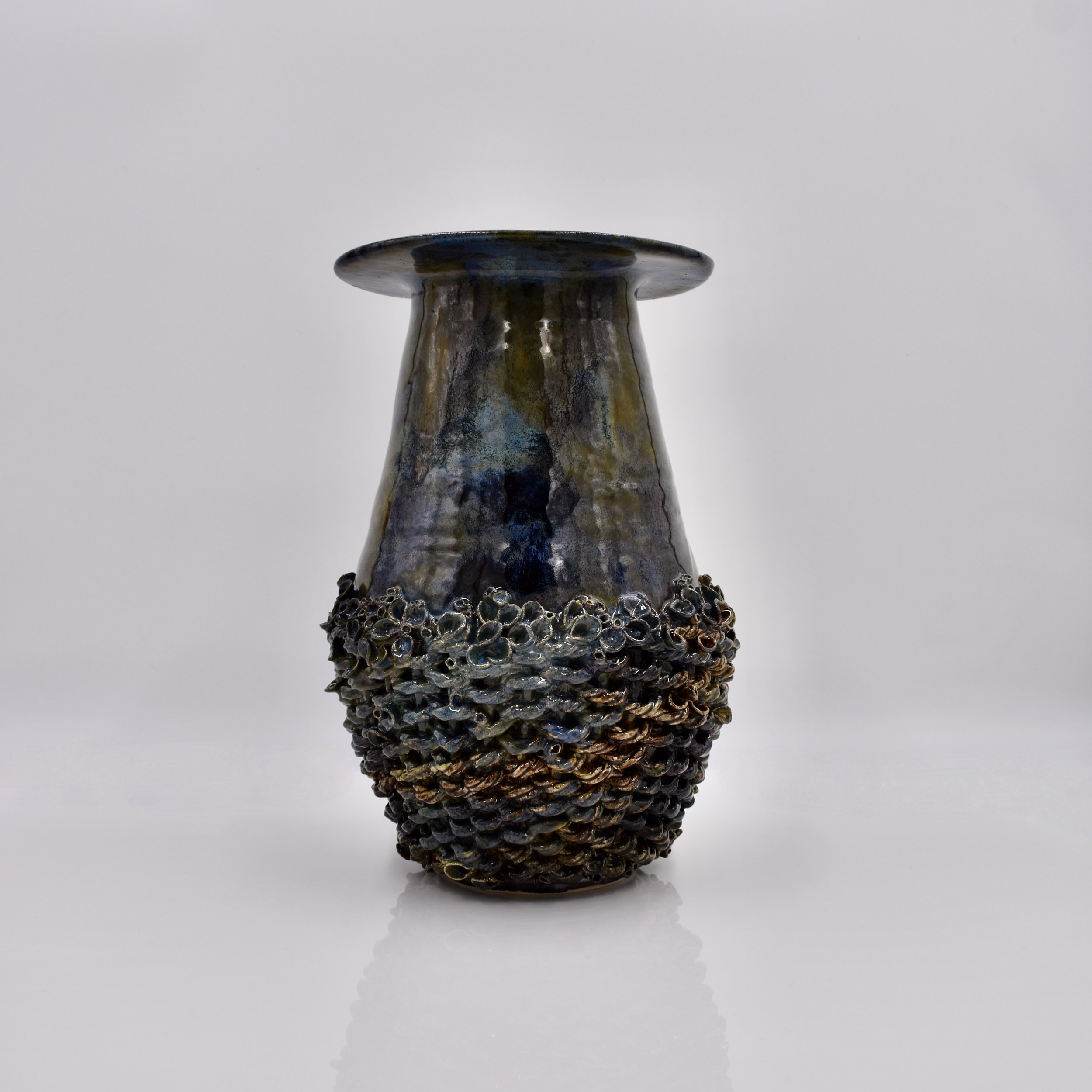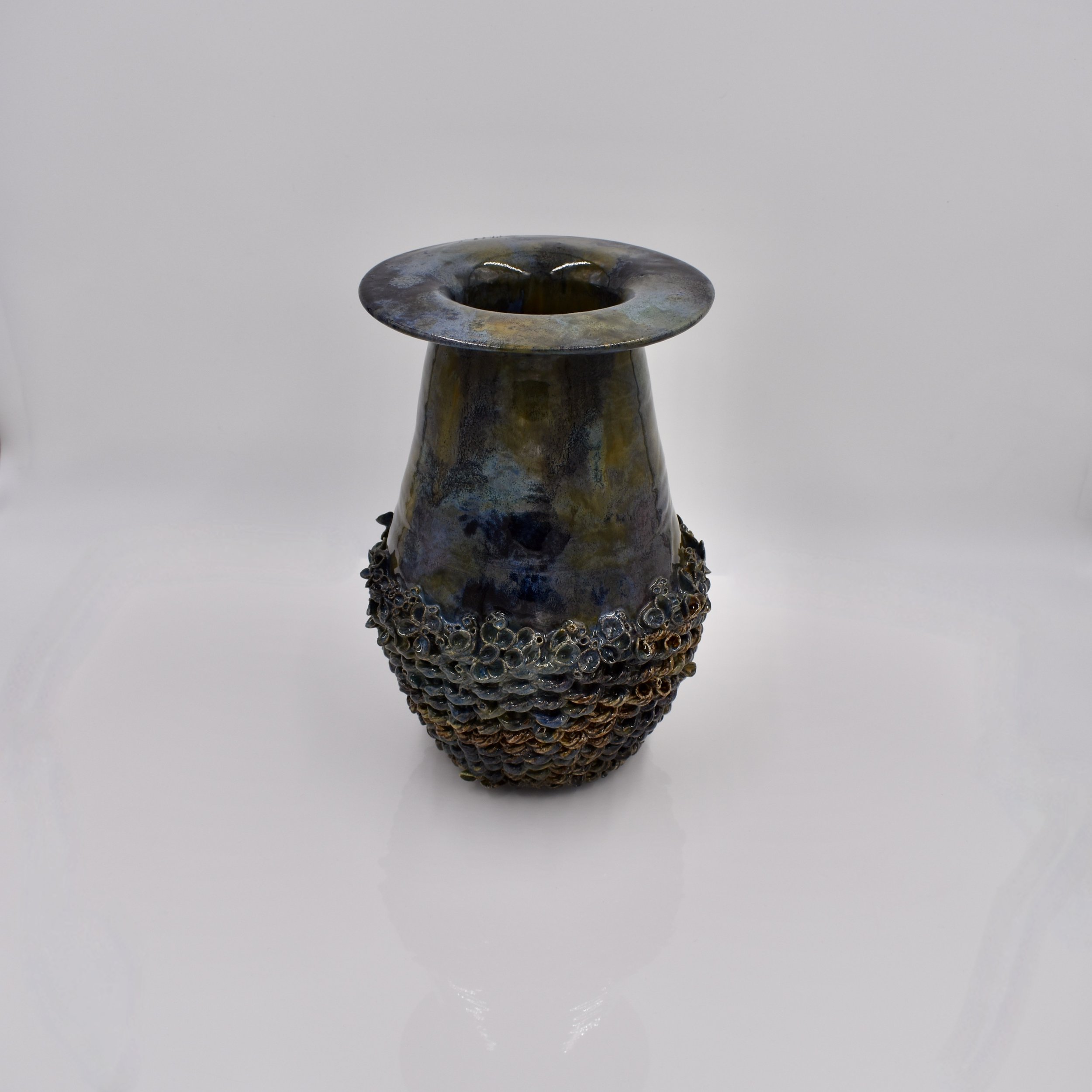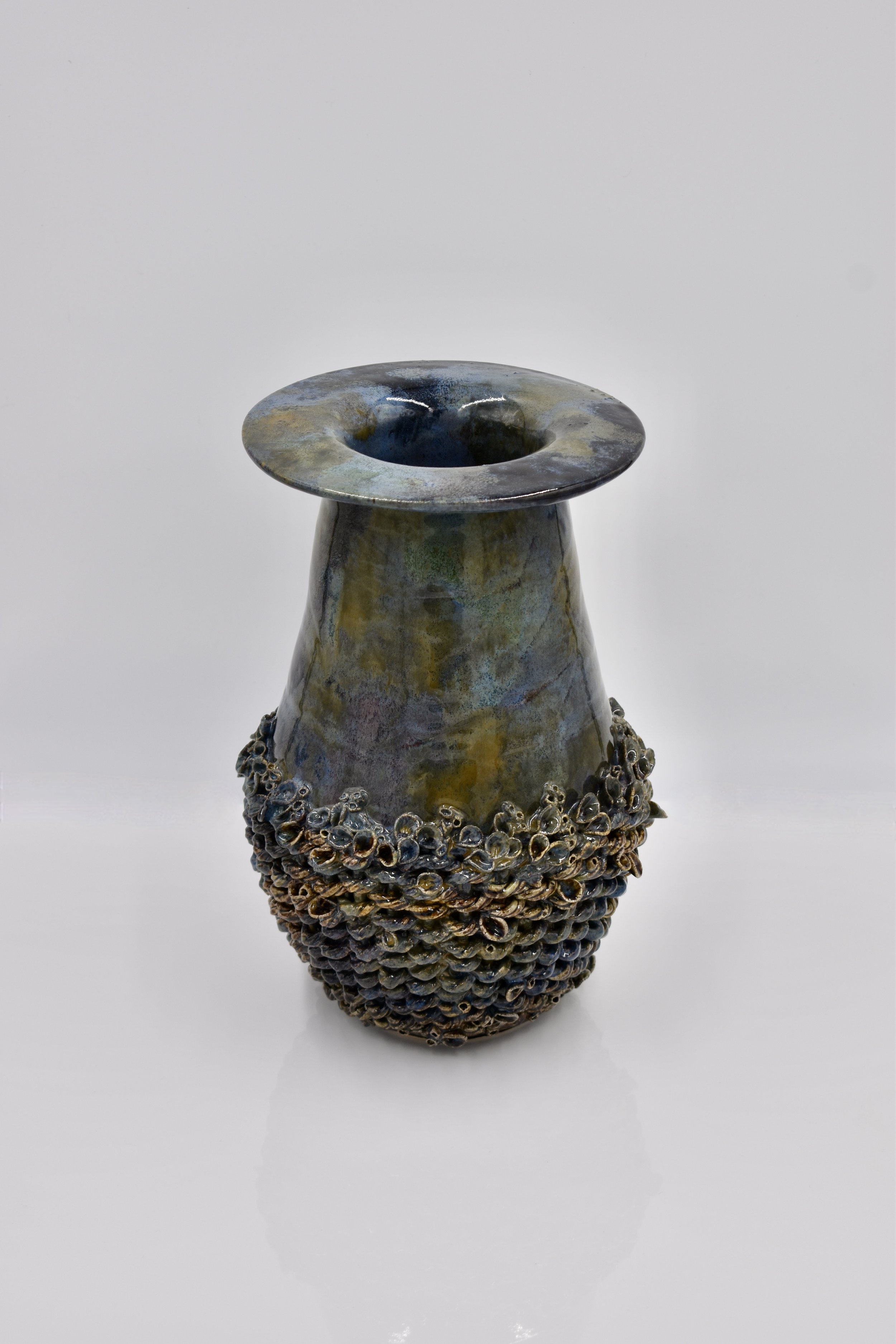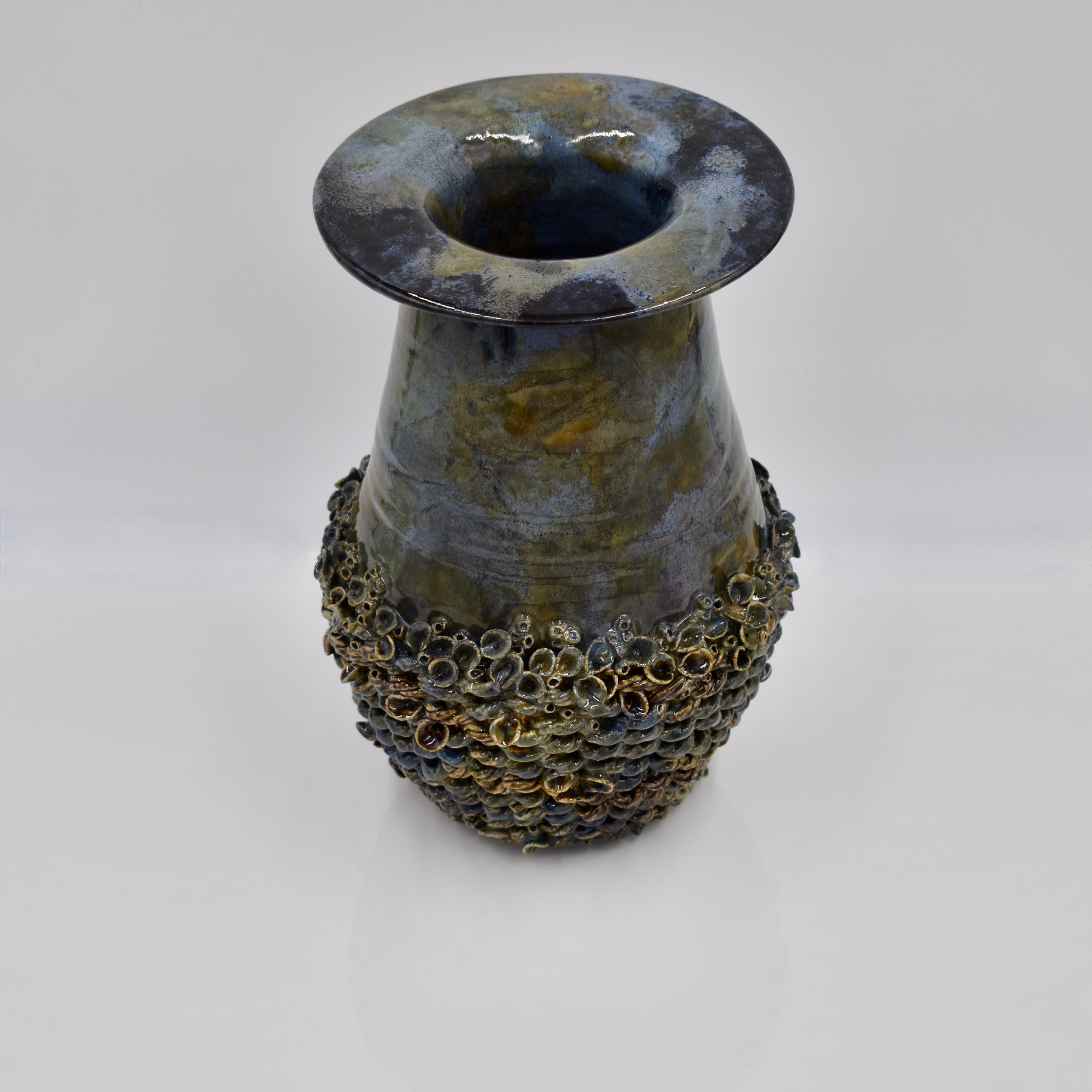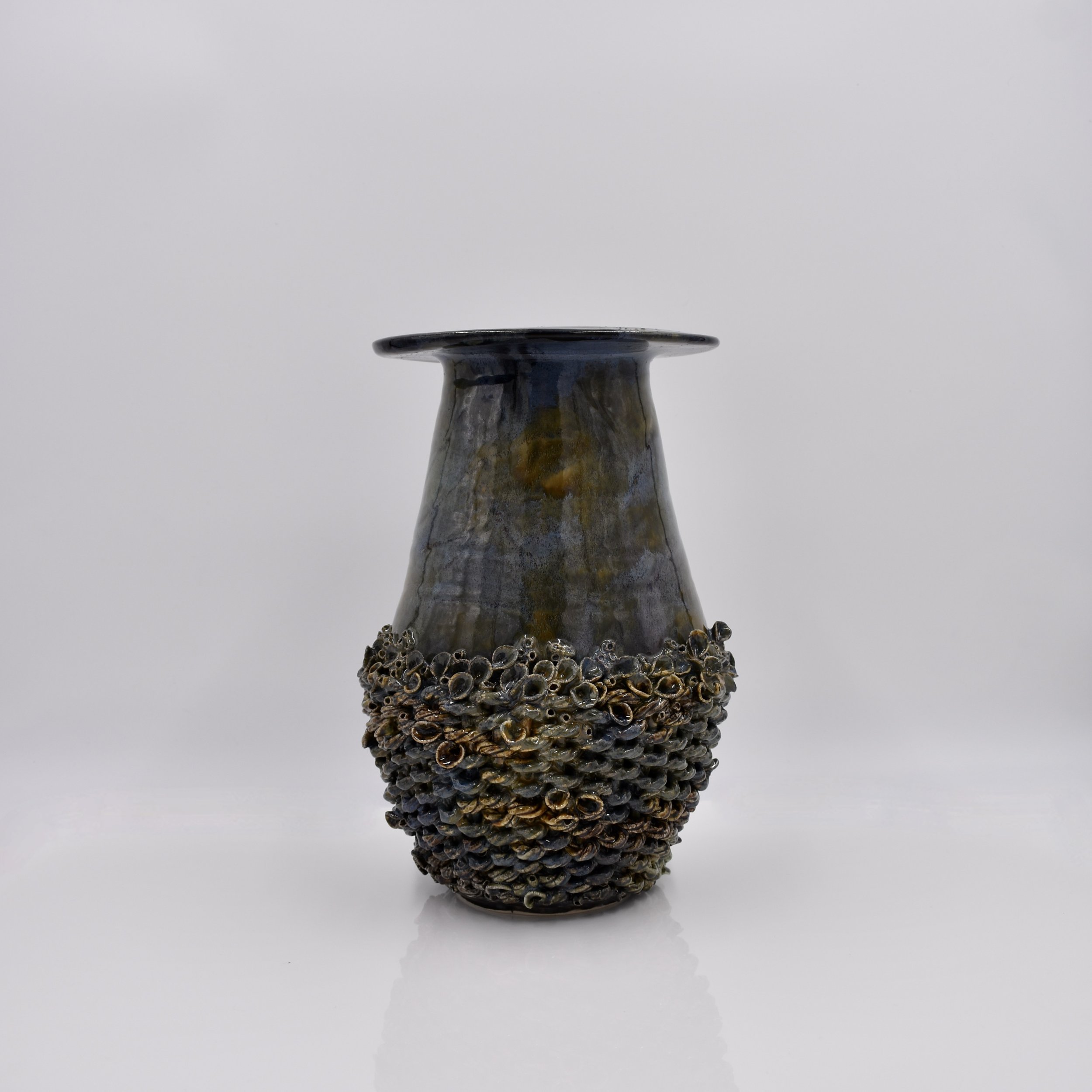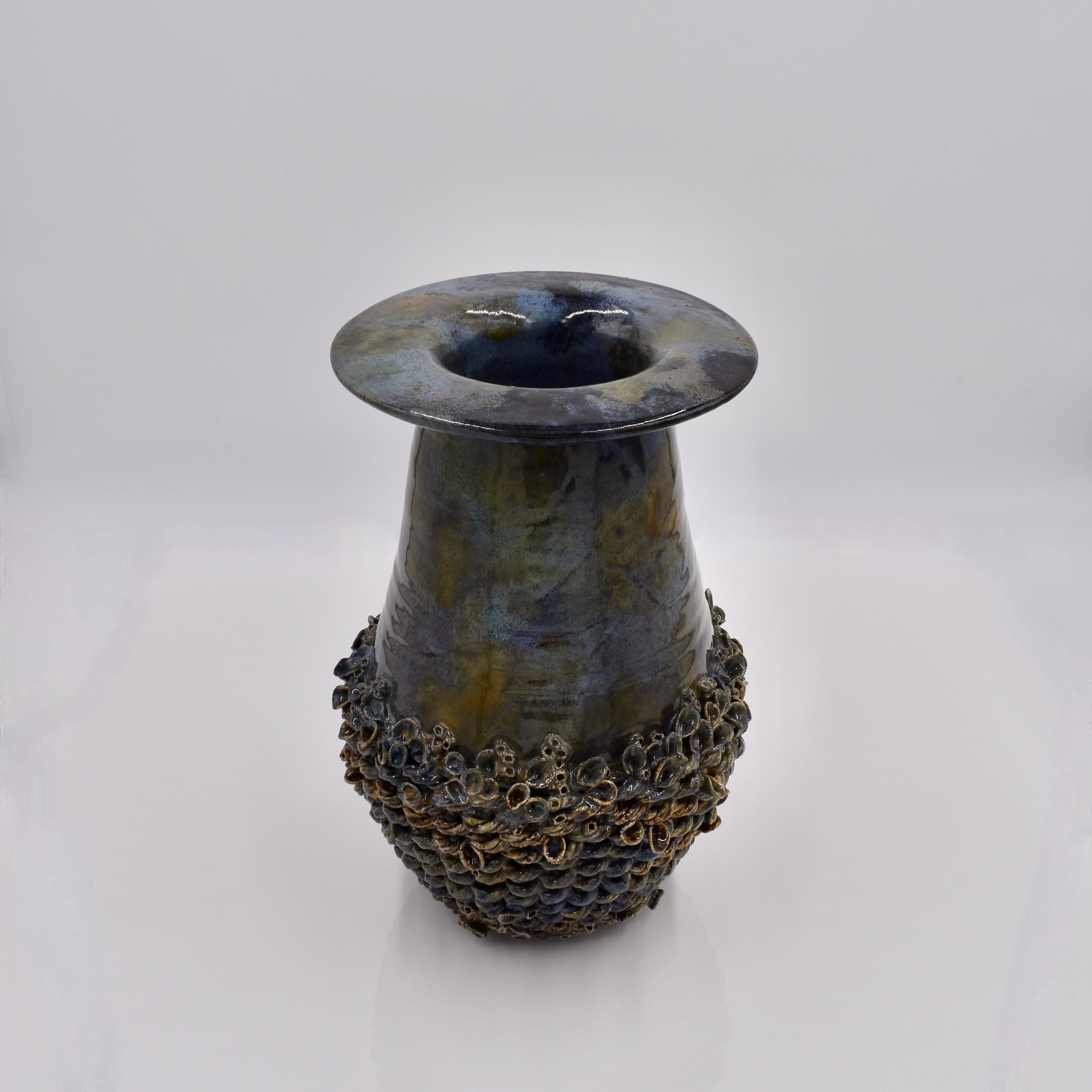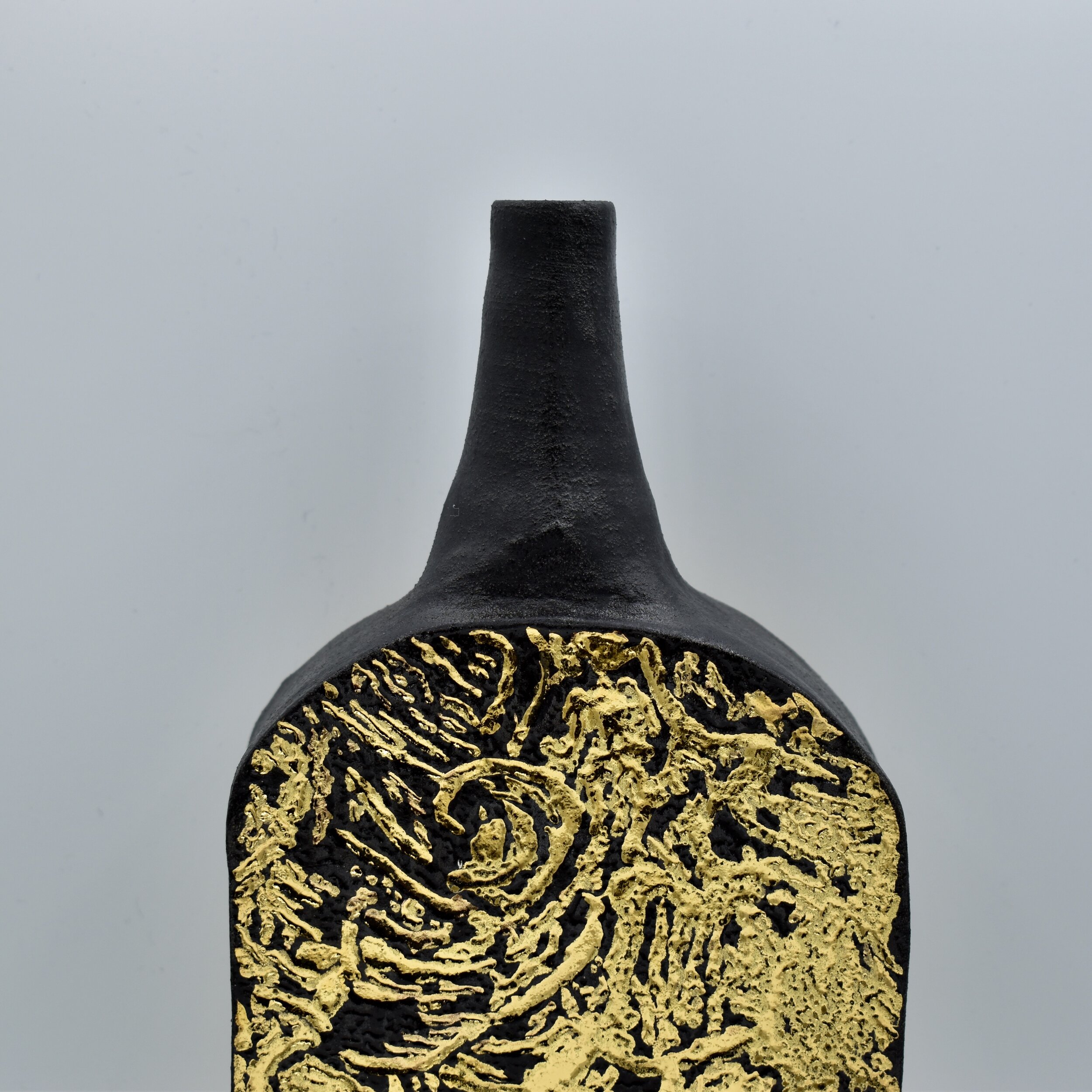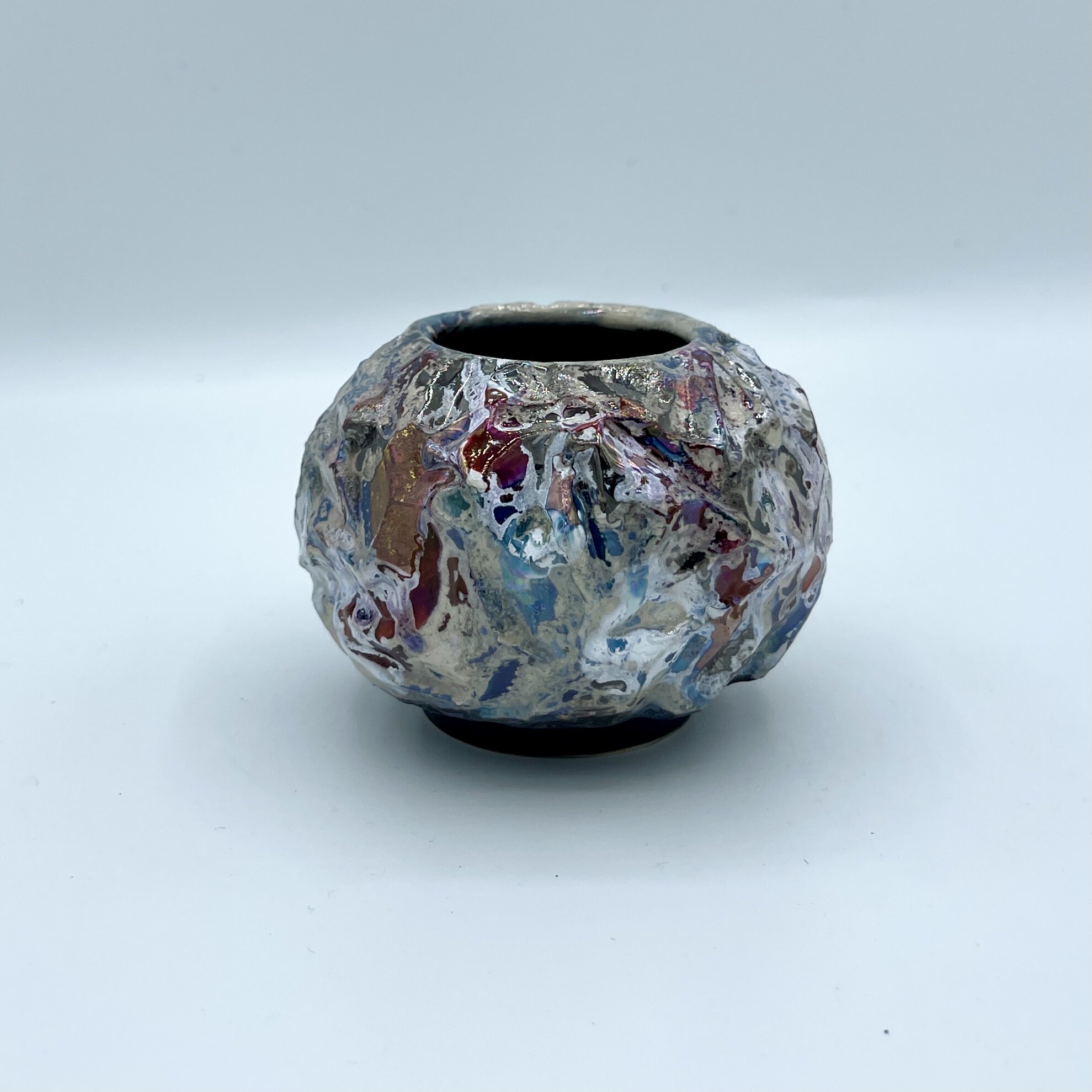 Image 1 of 7
Image 1 of 7

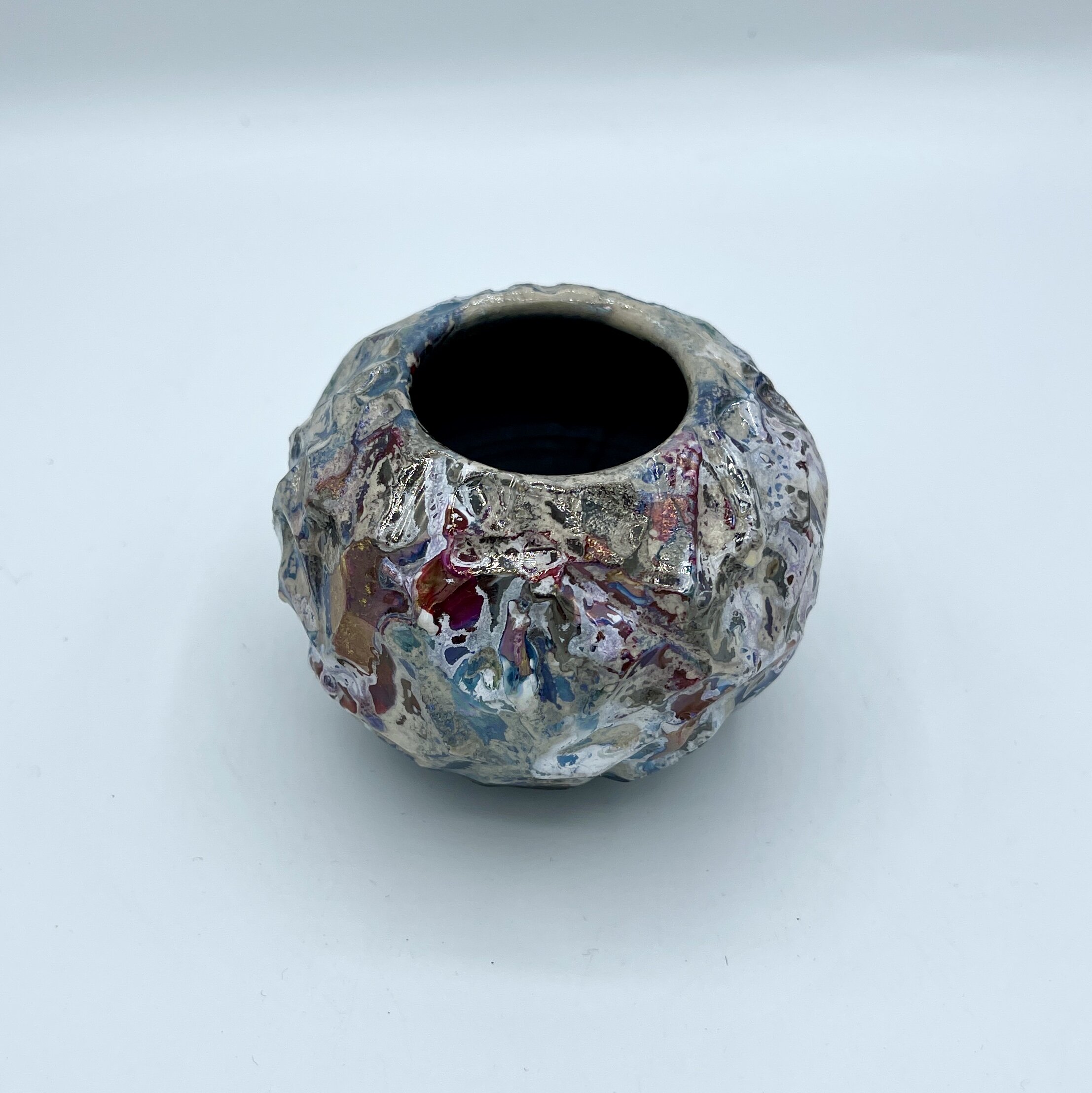 Image 2 of 7
Image 2 of 7

 Image 3 of 7
Image 3 of 7

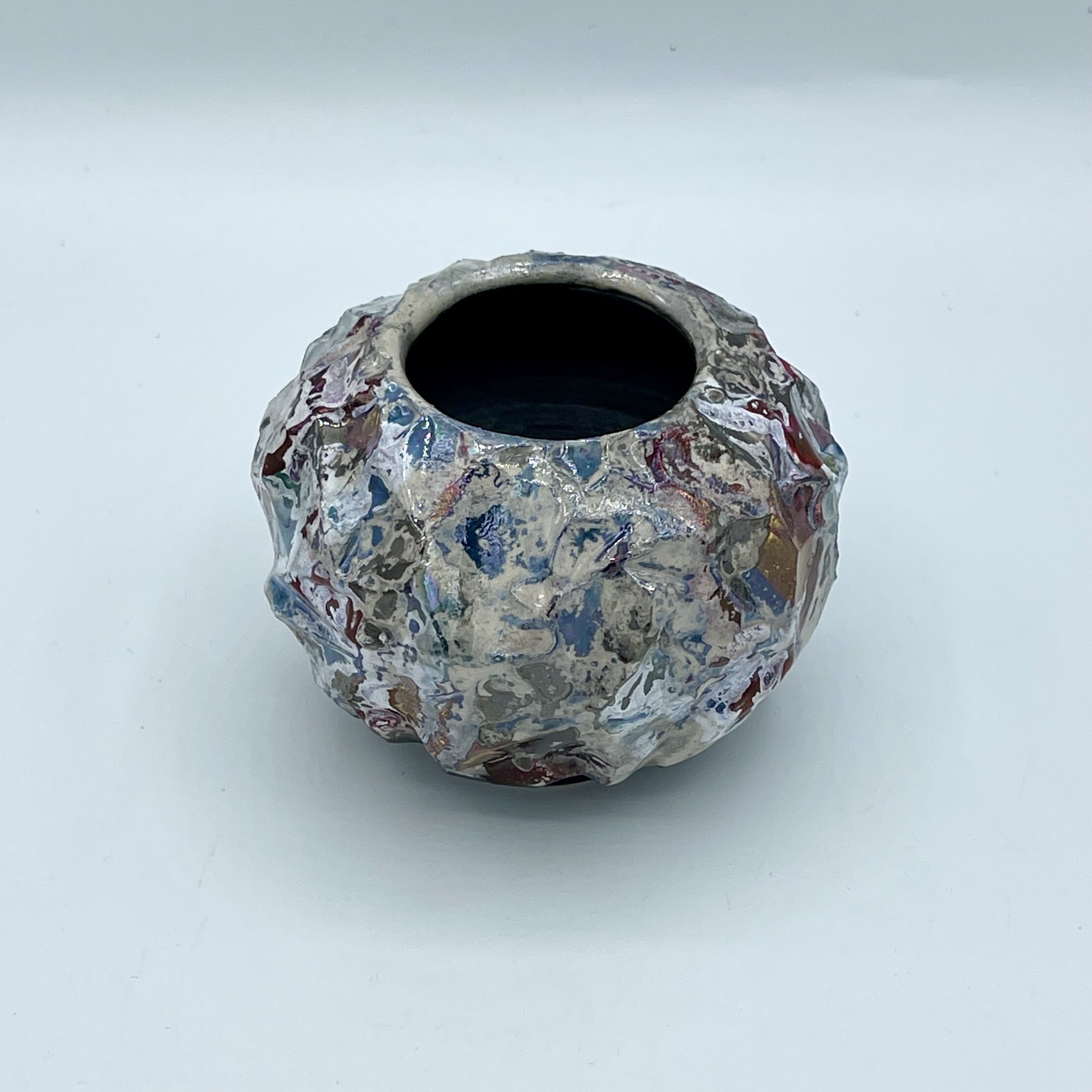 Image 4 of 7
Image 4 of 7

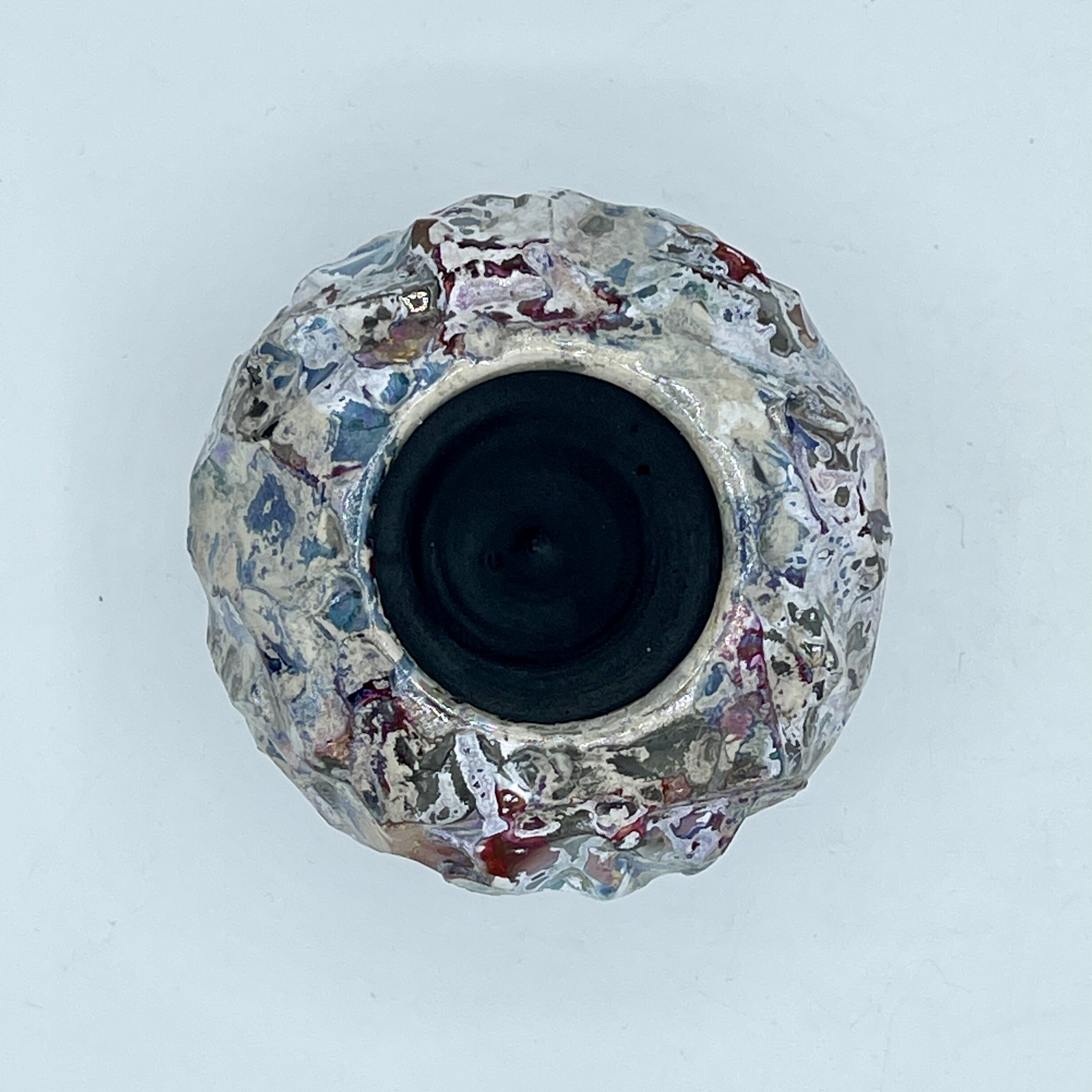 Image 5 of 7
Image 5 of 7

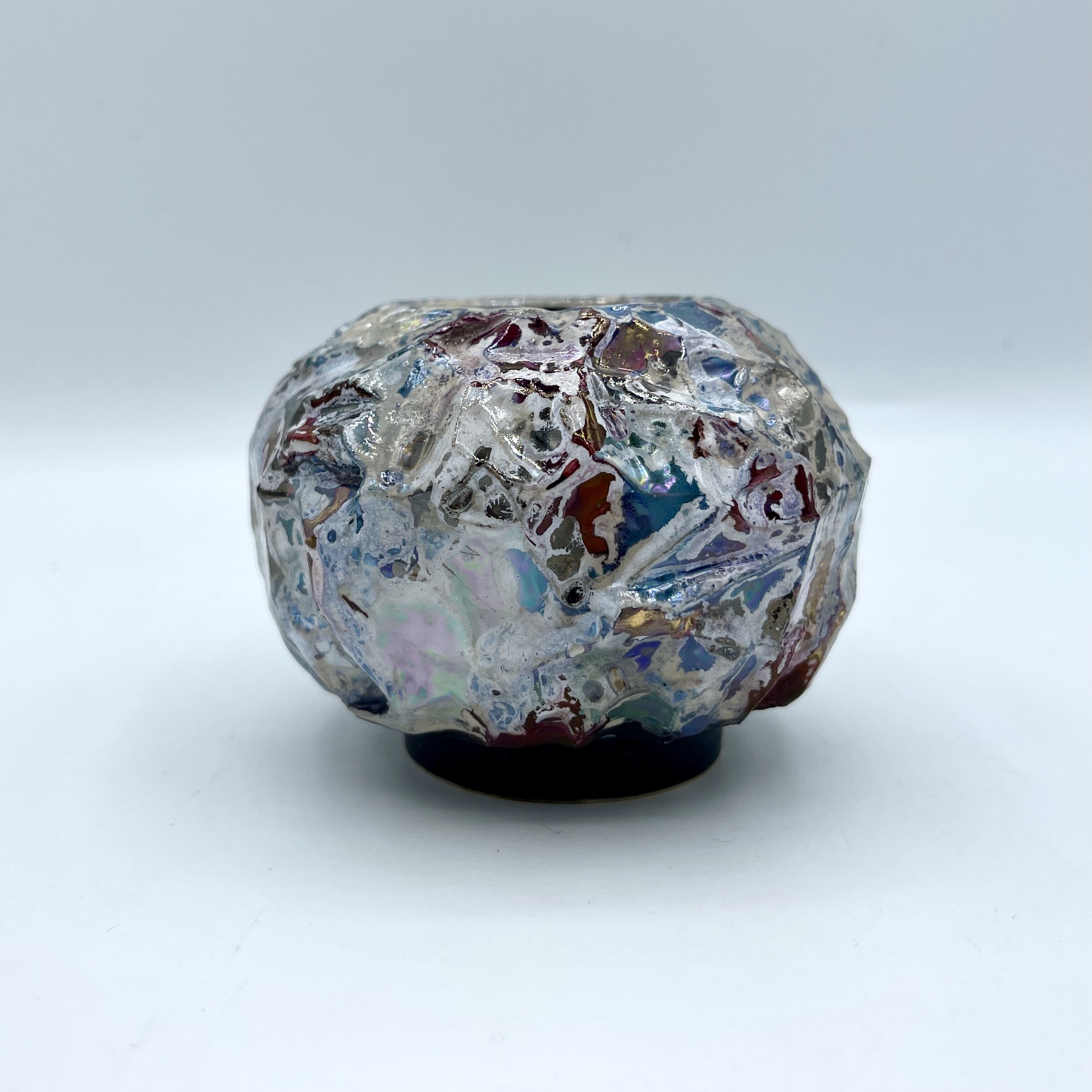 Image 6 of 7
Image 6 of 7

 Image 7 of 7
Image 7 of 7








Peacock Coal Pot (Inverted)
Dimensions: H: 6cms D: 8cms
Clay: Stoneware
Technique: Hand thrown, Kurinuki
Glaze: Black, transparent, coloured lustres
Sculptural / Not Functional
This small hand thrown Coal Pot has a textured surface achieved by using the Japanese technique of Kurinuki. The piece has been inspired by Peacock Coal, a seam that runs through Saundersfoot and the bay producing colourful coal resembling a peacock feather. These pieces are an inverted / negative interpretation of this work - exchanging black clay for studio white stoneware and yet staining it so that the body inside and on the base resembles the black clay. It has been finished using coloured lustres to create a jewel like quality on the surface of the pot.
Around Pembrokeshire you will find collieries in various states of dilapidation and preservation. These sites once produced some of the finest coal on the British Isles - it is reputed that Queen Victoria insisted that the coal for all royal residences came from Saundersfoot. Transported by small trains to Saundersfoot Harbour through the coastal tunnels and down ‘Railway Street’ (now called The Strand) past what was once a Chemist Shop, and now my gallery.
“A Study of Coal” is a body of work created in my studio that bears its roots in the industrial past of Pembrokeshire. Like all my work the theme is adapted to create abstract impressions resulting in striking sculptural pieces made from black clay. The full body of work includes Colliery Pots, Coal Pots, Peacock Coal Pots and Bell Pit Bowls.
The piece is initialled on the base.
This piece is NOT FUNCTIONAL.
Dimensions: H: 6cms D: 8cms
Clay: Stoneware
Technique: Hand thrown, Kurinuki
Glaze: Black, transparent, coloured lustres
Sculptural / Not Functional
This small hand thrown Coal Pot has a textured surface achieved by using the Japanese technique of Kurinuki. The piece has been inspired by Peacock Coal, a seam that runs through Saundersfoot and the bay producing colourful coal resembling a peacock feather. These pieces are an inverted / negative interpretation of this work - exchanging black clay for studio white stoneware and yet staining it so that the body inside and on the base resembles the black clay. It has been finished using coloured lustres to create a jewel like quality on the surface of the pot.
Around Pembrokeshire you will find collieries in various states of dilapidation and preservation. These sites once produced some of the finest coal on the British Isles - it is reputed that Queen Victoria insisted that the coal for all royal residences came from Saundersfoot. Transported by small trains to Saundersfoot Harbour through the coastal tunnels and down ‘Railway Street’ (now called The Strand) past what was once a Chemist Shop, and now my gallery.
“A Study of Coal” is a body of work created in my studio that bears its roots in the industrial past of Pembrokeshire. Like all my work the theme is adapted to create abstract impressions resulting in striking sculptural pieces made from black clay. The full body of work includes Colliery Pots, Coal Pots, Peacock Coal Pots and Bell Pit Bowls.
The piece is initialled on the base.
This piece is NOT FUNCTIONAL.
Dimensions: H: 6cms D: 8cms
Clay: Stoneware
Technique: Hand thrown, Kurinuki
Glaze: Black, transparent, coloured lustres
Sculptural / Not Functional
This small hand thrown Coal Pot has a textured surface achieved by using the Japanese technique of Kurinuki. The piece has been inspired by Peacock Coal, a seam that runs through Saundersfoot and the bay producing colourful coal resembling a peacock feather. These pieces are an inverted / negative interpretation of this work - exchanging black clay for studio white stoneware and yet staining it so that the body inside and on the base resembles the black clay. It has been finished using coloured lustres to create a jewel like quality on the surface of the pot.
Around Pembrokeshire you will find collieries in various states of dilapidation and preservation. These sites once produced some of the finest coal on the British Isles - it is reputed that Queen Victoria insisted that the coal for all royal residences came from Saundersfoot. Transported by small trains to Saundersfoot Harbour through the coastal tunnels and down ‘Railway Street’ (now called The Strand) past what was once a Chemist Shop, and now my gallery.
“A Study of Coal” is a body of work created in my studio that bears its roots in the industrial past of Pembrokeshire. Like all my work the theme is adapted to create abstract impressions resulting in striking sculptural pieces made from black clay. The full body of work includes Colliery Pots, Coal Pots, Peacock Coal Pots and Bell Pit Bowls.
The piece is initialled on the base.
This piece is NOT FUNCTIONAL.
